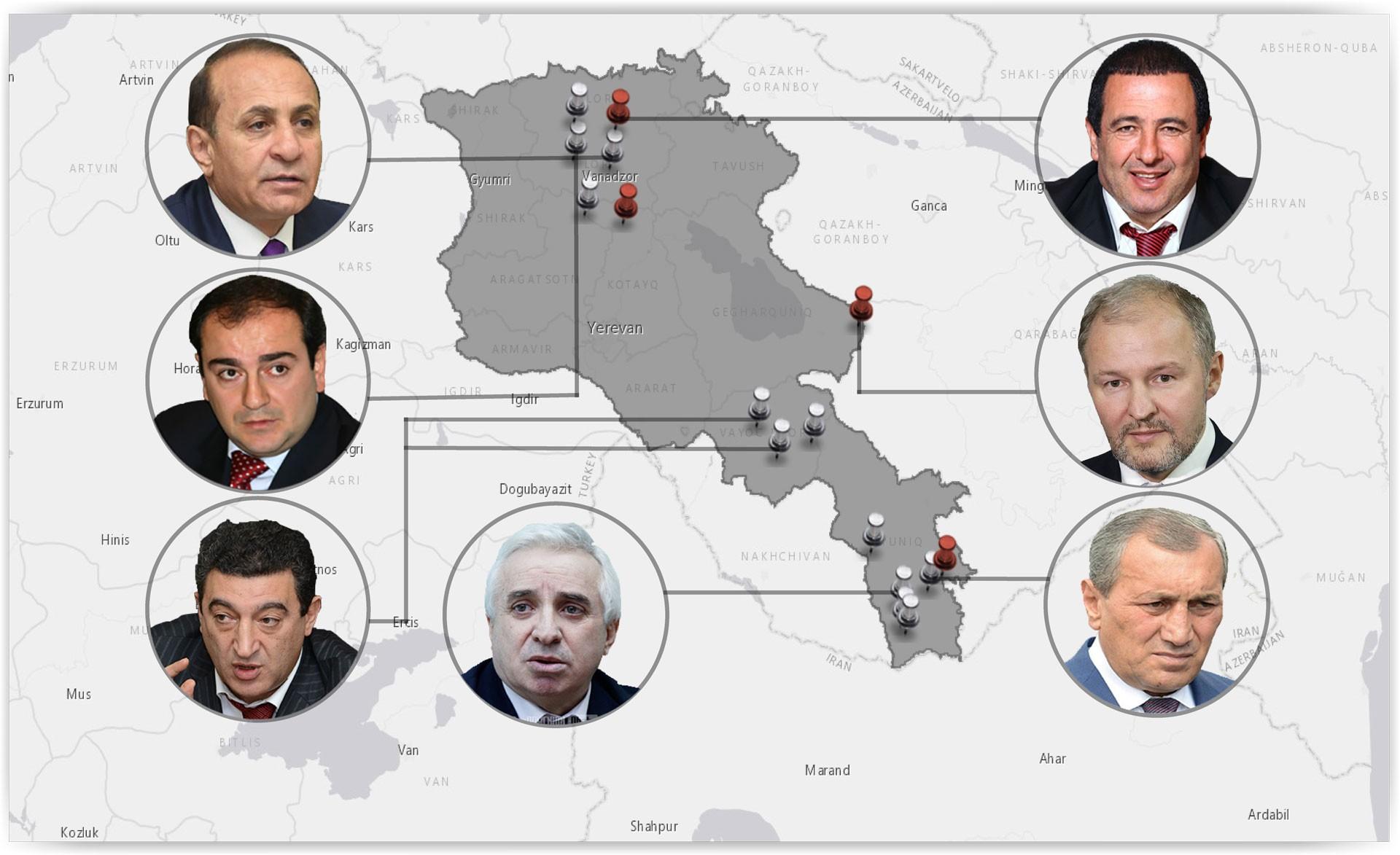
Mining Caucasian Gold: Corporate Profits Come at a High Price
Mining Caucasian Gold: Corporate Profits vs the Public Interest
Armenia and Georgia are not only neighbors but are countries in which mining plays a significant role in the economy. In both, the extraction of gold has been turned over to foreign firms and offshore companies about which people in Armenia and Georgia have little information.
Investigating the matter, Hetq has revealed that Russian businessmen, via various offshore companies, are extracting gold from the most profitable mines in Armenia and Georgia. These companies, in turn, are linked to diverse Russian government circles. In Armenia, former and current government officials, their relatives and associates, have been issued mining permits as well.
The Price of Armenian Gold: Impoverished Communities and Abandoned Tailing Dams
Armenia is a country rich in metals – copper, molybdenum, lead, zinc, gold and silver. Permits have been issued to operate 28 mines.
Article 10 of Armenia’s Constitution states that all mineral resources are the sole property of the state. Licenses are only issued to utilize these resources.
Millions of dollars in profit flow to those extracting and exporting the mineral resources of Armenia. However, citizens of Armenia know next to nothing about who is getting rich from mining the resources of their country.
There are currently sixteen companies that have the right to mine gold and gold-polymetallic mines in Armenia. As of 2019, only four are exporting these goods from the country.
Prior to 2019, Russian companies were operating the largest mines in Armenia, via various offshore corporate schemes. In 2019, changes to the stockholder makeup took place in the companies operating these two mines.
Sotk Mine: The New Owners

Sotk is the largest gold mine in Armenia. Located in Gegharkunik Province, the mine is 32 kilometers from Lake Sevan, the largest reserve of freshwater in the Caucasus. According to the mine’s prospectus, nine mine bodies with estimated total reserves of 31,141 tons of ore containing 133.5 tons of gold and 175.6 tons of silver,
GeoProMiningGold Ltd. operates the Sotk mine and has a license to do so until 2028. The ore is shipped by train from Sotk to the Ararat Gold Recovery Plant, that it owns, where the ore is processed. The company is the only one in Armenia, that produces gold dore alloy. In 2017, the company exported US$147 million worth of gold and silver dore alloy to Switzerland. (142,533 ounces, which is equivalent to a bit more than four tons).
According to the Armenian Ministry of Justice Corporate Register, the owner of GeoProMining Gold LLC. (registered in Armenia), is GPM Armenia B.V. (registered in the Netherlands). The latter has branches from Cyprus to the Virgin Islands and Russia. (B.V. is the abbreviation for besloten vennootschap, Dutch for private limited company). GPM Armenia B.V is 100% owned by the company Karlou B.V.
Karlou B.V., in turn, is wholly owned by Geopromining Investment (CYP) registered in Cyprus. Changes to the company’s management and stockholder base were made in March of this year.
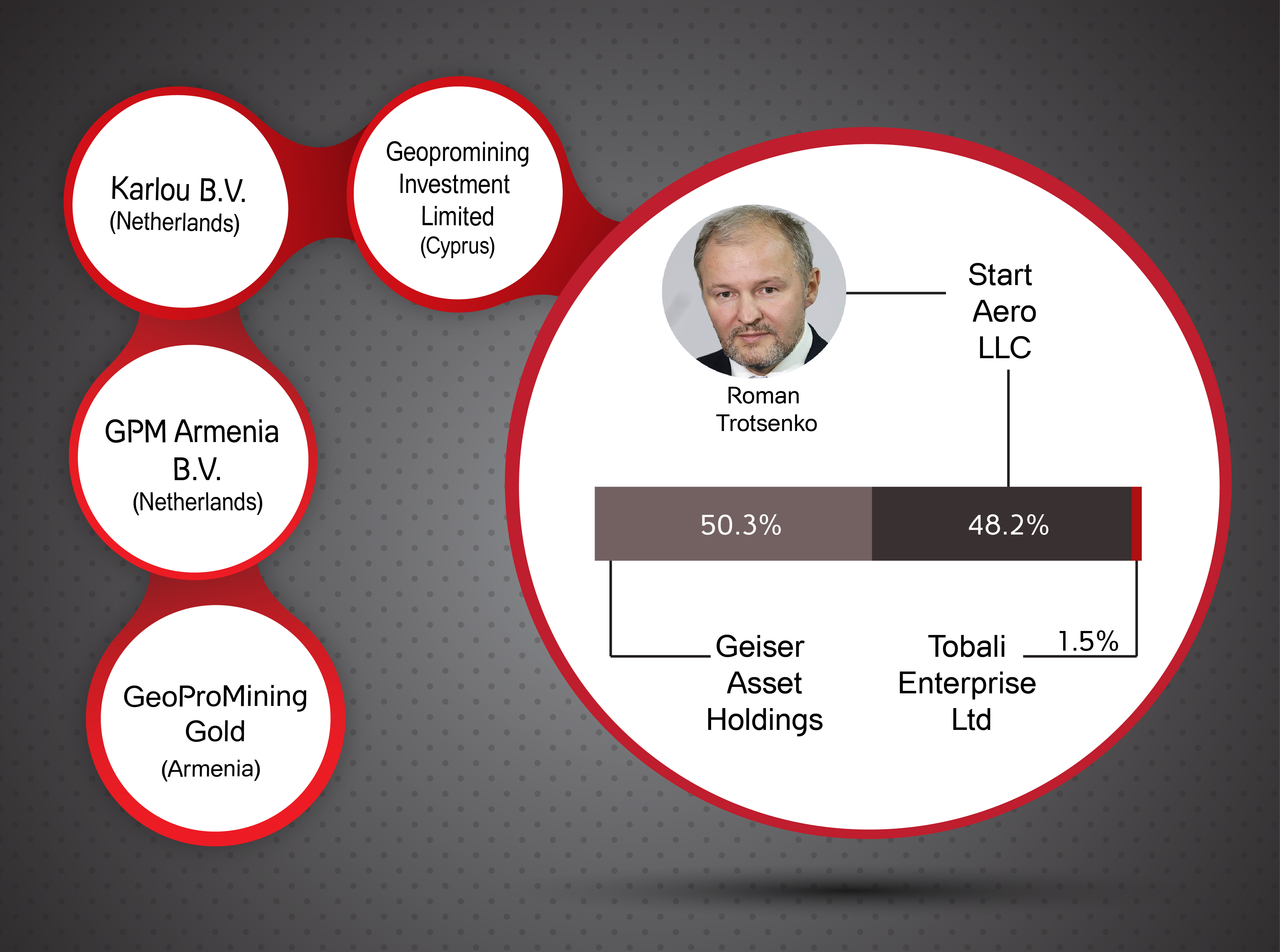
According to the new make-up, two companies, with unknown shareholders, registered in the British Virgin Islands, have assumed the management package for Geopromining Investment (CYP).
The second largest shareholder Geopromining Investment is Nakilep Overseas Limited, registered in Cyprus. It is owned by the Russian СТАРТ АЭРО (Start Aero) company. According to a document we received from the Russian State Registry, this company is wholly owned by multi-millionaire Russian businessman Roman Trotsenko. His name appears in the list of Cypriot company directors.
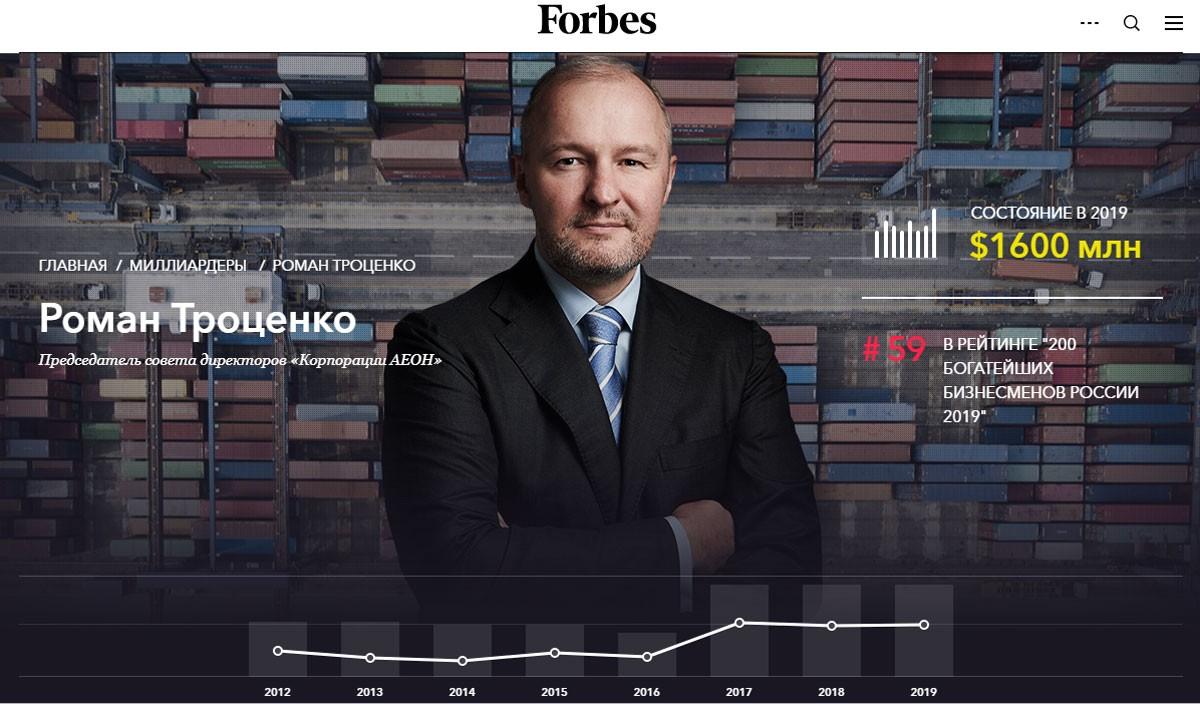
Since 2012, Trotsenko has worked as the adviser to Igor Sechin, considered a close ally of Vladimir Putin, and chairman of the Russian state oil company Rosneft. Trotsenko has also headed Rosneft Overseas, a subsidiary company managing the parent company’s foreign assets. Before this, Trotsenko was president of the United Shipbuilding Corporation.
According to a list published by Forbes of the richest individuals in Russia in 2019, Trotsenko is ranked 59th, and his assets are estimated at $1.6 billion. He now heads the AEOH corporation that includes thirty companies involved in a variety of business fields. These include shipbuilding and thirteen airports.
The Russian businessman Siman Povarenkin founded and was the major shareholder of GeoProMining Gold (GPM Gold) Ltd. After graduating from Omsk University’s Faculty of organic chemistry in 1992, Povarenkin worked for two years in an automobile tire factory headed by his father Viktor Povarenkin. Siman headed the factory’s foreign division. At the age of 28, Siman served as director of the Omsk branch of Incombank, Russia’s first private bank.
One can assume that the companies registered in the British Virgin Islands belong to Povarenkin since he continues to head GPM Gold‘s board of trustees. In any event, we were unable to unearth the names of the shareholders of those 2 BVI companies.
GeoProMining Investment (the international parent company of GPM Gold) also owns and operates two underground mines in Russia’s Yakutia (Sarylakh and Sentachan) region, as well as the Sarylakh Processing Plant near the Sarylakh mine. High-grade antimony (10%) and gold (10–30 g/t) ores are mined at the Sarylakh-Surma and Sentachan deposits.
Due to GPM Gold’s credit history and the fact that its shares were used as collateral, the Russian government owned Sberbank and its subsidiary Sberbank Capital Ltd.
In December 2013, GPM Gold and Sberbank signed a cooperation memo, after which the bank lent GPM Gold $250 million. In return, the bank obtained 26% of its shares. In 2016, Sberbank Kapital announced that it had obtained a 31.47% share in GPM Gold, not through a loan, but by purchasing shares outright.
In addition to operating the Sotk mine in Armenia, GPM Gold also operates the Agarak Copper-Molybdenum Combine, in addition to the Ararat Gold Recovery Plant.
According to Sotk technical-economic data, GPM Gold’s yearly net profit from the mine amounts to $78.2 million. By way of comparison, the 2019 budget of Gyumri, Armenia’s second largest city, is $7.4 million.
Sotk village residents often have to contend with a brownish cloud in the air. This is caused by explosives set off at the mine. The cloud covers both the village and the nearby town of Vardenis. The cloud is a mixture of explosives and dust.
Locksmith Ruben Grigoryan, who worked at the Sotk mine and was dismissed last April 9, says that the when explosives are set off in the open mine area, they mix with ammonia and saltpeter and seep into the underground water reserves. The company then pumps the water into a village river that feeds into the Metz Masrik River which eventually flows into Lake Sevan. The company makes sure to conceal the entire process from the eyes of local residents. The mine has reached such a depth that underground water, bubbling up from below, must be pumped out.
“Sotk is the most dreadful of mines in Armenia,” says geologist Hakob Simonyan, who’s worked in the mining sector for forty years. He spent 27working at Sotk, at various jobs, including mine manager and services head. Simonyan says a unit to clean and remove the waters was supposed to be built according to a 2012 plan, but that it remains on paper.
“The river that flows into Lake Sevan once held fish weighing two kilograms. I caught many of them. Now, if someone falls ill, and are told to eat a carp, there are none to catch. They’ve all disappeared,” he says.
Former Sotk mine employees say that faulty methods were used to dig to a depth of 250-300 meters at the open pit mine. It’s dangerous, and miners often refuse to extract the ore. They’re afraid of being buried in landslides from above. Those protesting such conditions are advised to resign.
“Work would immediately cease if a group of specialists would enter the Sotk mine. The pits should have gradients, but this doesn’t exist in Sotk. If a rock fell from above, it would destroy equipment and would turn a person underneath into lavash,” says Simonyan. (Lavash is a type of Armenian flat bread)
Ruben Grigoryan has worked at Sotk since 2013. Even though he worked for nine days after being dismissed and only found out about his dismissal when he received a notice in the mail, he believes that he was fired because of his outspokenness on the job and his arguments with Russian management. He plans to sue GeoProMining for firing him. He says conflicts arise between employees and management because Russian safety inspectors are determined to find safety violations and place the blame on the workers and thus deprive them of overtime pay. Overtime is 80% of normal wages.
Hakob Simonyan says that salary system at Sotk benefits the mine operator.
If you have more than 15 doctor’s notices for sick days, you’re deprived of overtime for the whole year. That enterprise pays via overtime. That’s why so many get sick and continue working. They regard us Armenians as 3rd or 4th class people. They discriminate and don’t consider us human beings. Let’s assume they have thirty safety workers. They bring them from Russia and pay them top wages. More than five times the normal rate. Our safety workers get 70,000 drams a month. Those from Russia get $1,000,” Simonyan says. (70,000 AMD is roughly $150 at today’s exchange rate)

Ruben Grigoryan says the company isn’t concerned with the health of its workers, and that tragic accidents often occur due to inadequate regulations. Such accidents have claimed four lives in the past few years. A dump truck driver died last year while releasing his cargo.
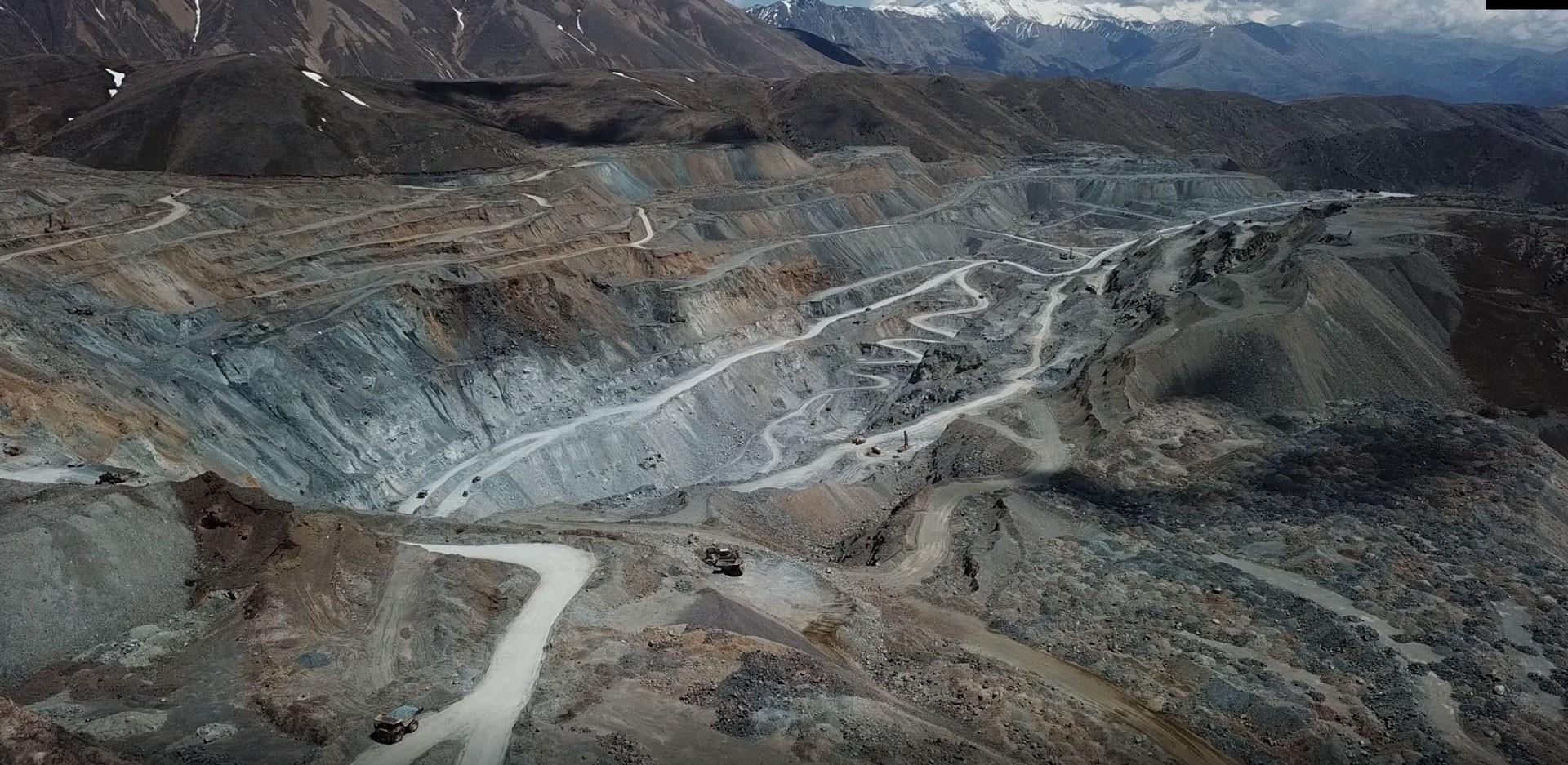
“Two people died last year at Sotk within two months. (Never Danielyan and Manvel Martirosyan were truck drivers-author). One person was left disabled, but there was no accountability. When someone dies it means that someone made mistakes. I’ve never heard of anything similar, when no one is punished or held accountable for a death. At Sotk, the person who dies is guilty. A guy could work correctly for thirty years, but if he dies on the job, he’s the one who made the mistake. Human life holds the most value. They apprise it at $3,000. If a person dies, they take $3,000 to the house of the deceased. They write up the death notices so that the deceased is made out to be at fault and no one else,” says Simonyan.
Simonyan says that at the waste collection site, where the dump trucks haul the ore waster, regulations forbid trucks to approach the lip of the pit to dump their cargo. They must dump the waste at a distance so that bulldozers can push the stuff over. He claims that management forces drivers to dump the waste directly into the pit, so as not to pay extra to the bulldozer operators. And since those directing the dump truck drivers at the waste site have been fired as a cost-cutting measure, drivers often can’t get their bearings and drive right into the pit.
When asked why government inspection agencies haven’t registered these and other violations, Simonyan said: “Yes, the inspectors visit, but how can I put it. In typical Armenian fashion they feed them and send them on their way.”
In this context, Simonyan is reminded of the time in 2010 when inspectors from the Control Chamber visited the mine and registered a number of violations. Much noise was made but nothing came of it.
Anahit Mkrtchyan, a sociologist who heads the Community Mutual Assistance NGO, has compiled a study entitled “What area residents think about the social impact of GPM Gold operations on the Sotk community and proposals to counter any negative impacts”.
The specialist concludes that GPM Gold operations at Sotk fundamentally undermine the quality of the local agriculture. Dust from the mine and the polluted surface water also negatively impact people’s health, she says.

“The dust at the crushing site rises into the atmosphere. When it rains or snows, that dust settles over the whole area. Today, we have blasting at the mine every day. 20-30 tons of explosives. The gases that result, the explosives, the dust, pollute the environment,” Says Simonyan.
Mine management refused to meet with us when we visited the Sotk even though GPM Gold General Director Anatoly V. Gogotin was there that day. A Russian safety/security employee advise us to contact the company’s press office to get permission to enter the mine site and to set up an interview.
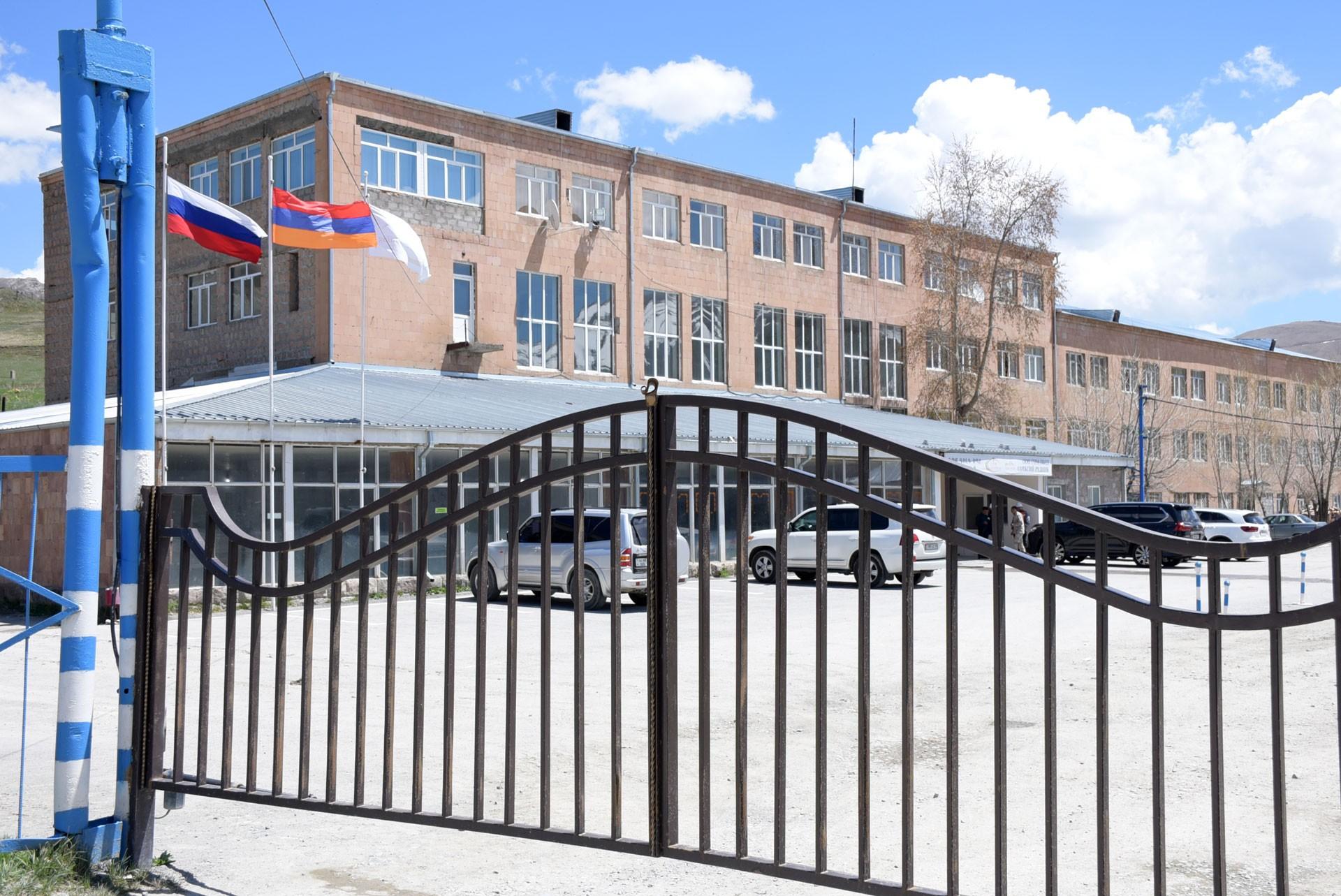
Press office head Ruzanna Grigoryan told us that we first had to schedule a visit to the mine ahead of time. They couldn’t let us enter anytime we showed up out of the blue. We also had to send our questions to them in writing so that they could pass them along to their Russian high-ups. The company needed permission from the Russians before they’d allow us to enter the mine or conduct interviews.
In 2017, we also contacted Ruzanna Grigoryan, asking her about the company’s shareholders, its operation and product figures. She described our queries as “manipulative” at the time and refused to answer. She even refused to organize an interview.
Hakob Avetyan, the Mayor of Geghamasar (a community which includes the village of Sotk), told Hetq that GPM Gold leased 1,037 hectares of land from the community. It mines 51 hectares and the rest remains pastureland. The company pays the community AMD 68 million ($140,000) annually. Property tax on the land amounts to 116,000 drams. The company annually spends some 5 million drams in social assistance to Geghamasar.
The Shahumyan Gold-Polymetallic Mine Also Has a New Owner
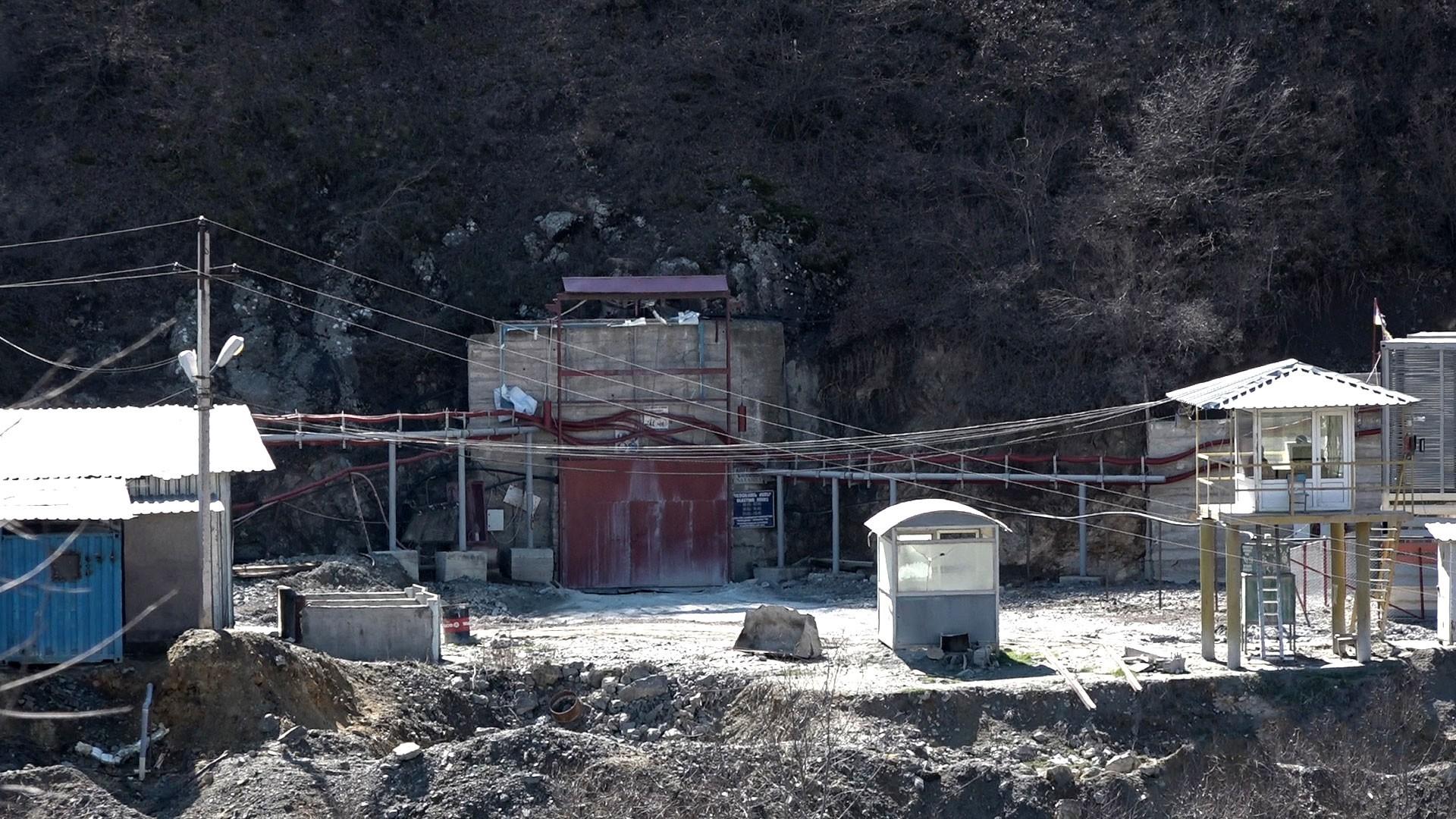
Shahumyan, the second largest gold mine in Armenia, is located near the town of Kapan, in the country’s southern Syunik Province. The mine is operated by Kapan Mining and Processing Enterprise CJSC.
Deno Gold Mining, a subsidiary of Dundee Precious Metals Inc, (a Canadian-based international mining company) began exploratory work in 2008-2013 to launch an open pit mine in the area. Deno Gold had spent millions of dollars for exploratory work and to buy the land from Shahumyan residents.
The company (later to become Dundee Precious Metals Kapan CJSC) decided to forge ahead and start production as an underground mine.
The Russian company Polymetal International purchased the Kapan mine in 2016. In 2019, Chaarat Gold International Limited, registered in Cyprus, bought the Kapan mine from Polymetal for $55 million.
According to the Cyprus State Registry, Chaarat Gold International Ltd. is owned by Chaarat Gold Holdings Limited registered in the British Virgin Islands.
The company now pays AMD 1.4 million in annual land tax and AMD 107 million in rent annually to the Kapan Municipality.
As Hetq reported last year, no one lives in Shahumyan anymore and the area’s once flourishing gardens and fruit trees have long since been cut down, to be replaced with waste dumps and toxic tailings.
The Chaarat website states that 34.78% of the company’s shares is owned by Martin Andersson, via Labro Investments Ltd. Andersson is famous for being the co-founder of the Brunswick Group, which is headquartered in London and is part of the British multinational advertising and public relations company the WPP Group.
China Nonferrous Metals Int'l Mining Co. Ltd. owns 5.59% of Chaarat Gold Holdings Limited. The former, a Chinese corporation engaged in the mining of non-ferrous mineral resources, is a Chinese state-owned enterprise.
According to the Chaarat website, there are several other small shareholders. The website, however, provides no information regarding the remaining 35% of shares.
Chaarat owns two high quality development assets in the Kyrgyz Republic, the Tulkubash oxide deposit and the Kyzyltash sulphide deposit.
Hetq contacted its partners in the Kyrgyz Republic to clarify whether Chaarat is operating in the country. They told us that while Chaarat has been in the country for ten years it is not carrying out any mining. The deposits are being evaluated and the data isn’t encouraging. It seems that the company wants to present numbers in order to justify a rise in the share price on the stock exchange. This is implied on the website where the company’s share price on the London Stock Exchange is periodically updated.
The Cyprus State Registry shows that Chaarat has used the Kapan Mining and Processing Enterprise (KMPE) as collateral.
Hetq wrote to Chaarat Kapan CJSC (the new name of the Kapan Mining and Processing Enterprise), to find out who are the real shareholders of Chaarat Holding Limited, registered in the British Virgin Islands, where have the company’s stocks been put up for collateral and for what purpose, what operations are the company carrying out in Kyrgyzstan, is it conducting ore extraction in the mentioned sites, or does it only have the right for exploitation. The company replied, saying it wasn’t authorized to answer these questions. It provided information about how to minimize environmental damage, its future projects, as well as the future of the Geghanush tailings dam.

In 2016, KPME exported 100 tons of gold ore worth $570,000 to Belgium. According to a 2018 report published by Armenia’s Extractive Industries Transparency Initiative (EITI), KPME exported no gold ore in 2017 but did export copper and zinc.
However, according to the Chaarat website, for the year ended December 2017, the Kapan Mine produced around 50 Koz of gold equivalent, generating a PBT of US$2.2 million, and had gross assets of US$95 million.
KPME tailings are collected in a dam located next to the village of Geghanush. The dam is quickly filling up. The dam also borders the village of Gomaran. It’s just one kilometer away. The tailings dam and related infrastructure encompass an area of 32 hectares.
The Mghart Gold Mine: Millionaire Armenian MPs
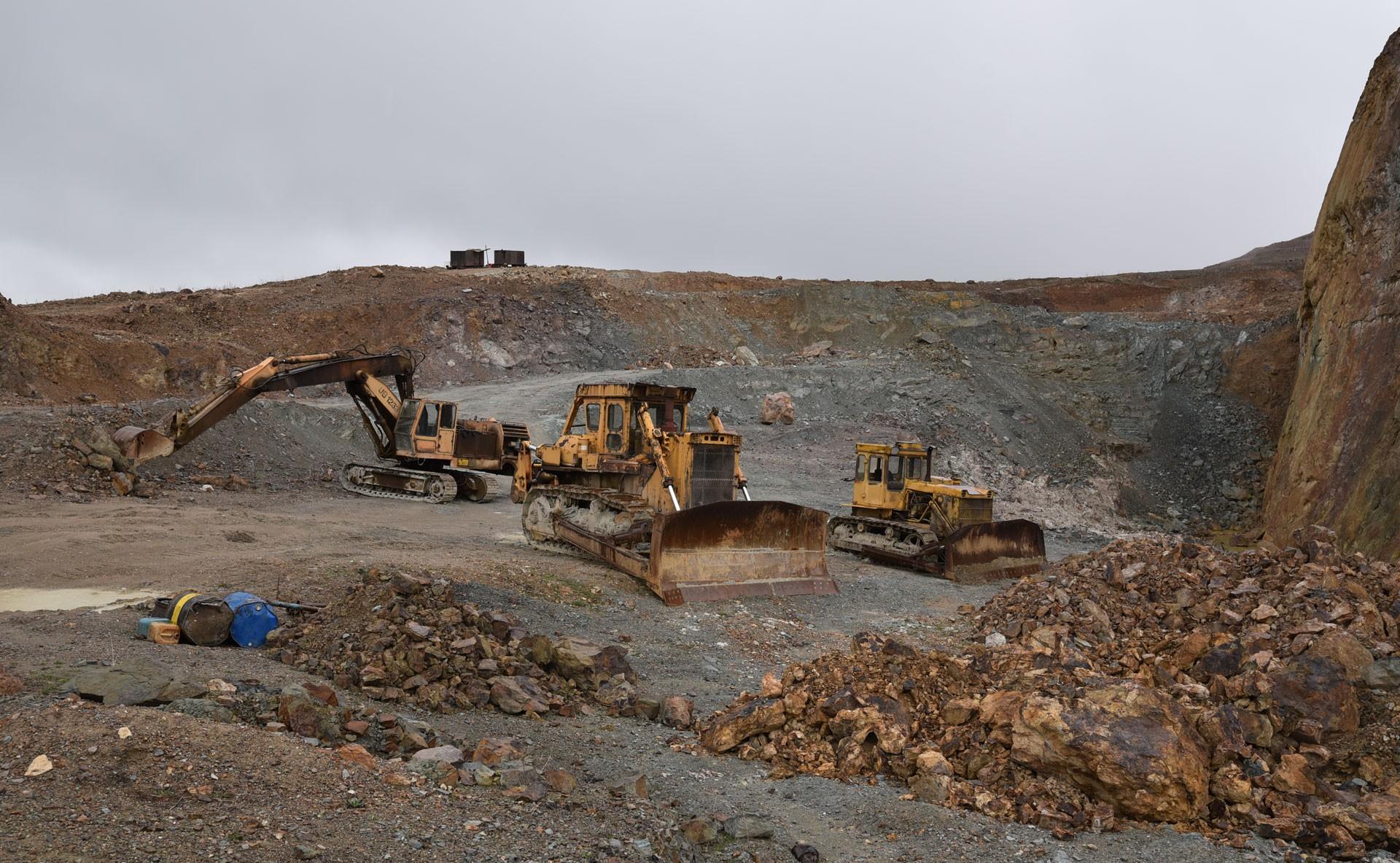
The Mghart mine is located in Armenia’s northern Lori Province bordering Georgia. Multi Group Concern Ltd. is the company that’s operated the mine since 2006. 66% of the company stock is owned by Gagik Tsarukyan, the founder of Prosperous Armenia party. Tsarukyan, a millionaire who owns diverse local and foreign business interests, is also a deputy in the Armenian parliament. The remaining 34% has been owned by Samvel Tsarukyan. Both men are registered as residents of Arindj and it’s assumed they are related.
Mghart is an open pit mine. The gold is extracted at a nearby plant. 50,000 tons of ore are extracted annually.

In 2017, Multi Group exported 80 tons of ore, valued at AMD 125 million ($259,000) to Switzerland.
Mghart is a small village with only 330 inhabitants. After the community consolidation process, Mghart was incorporated into the community of Odzoun along with eight other villages.
Odzoun Mayor Arsen Titanyan says that Mghart is the poorest of all the villages and faces the most problems. The most pressing problem is the lack of potable water. The village hasn’t had any since Armenia gained independence in 1991. Residents draw their drinking water from four village springs. During drought conditions, the springs are reduced to a trickle or dry up altogether. If this occurs, residents are forced to draw water from the cisterns of a neighboring villages. Multi Group hasn’t made any significant development investments in Mghart since 2005.
“No, they haven’t implemented any specific project in the village. But we have petitioned them, for instance, about assisting to level the road surfaces or to install water pipes. We’ve requested that they loan us equipment. They lent us the equipment, loaded with diesel fuel, and they dug out trenches for the water pipes. But they haven’t implemented any specific project for the village,” says Mghart Administrative Head Avag Mousinyan.
This year they’ve reached a preliminary agreement that the company will help resolve the water issue. Nothing has been discussed as yet.
Mghart residents made this precondition clearly known to Multi Group in April 2018, when they learnt that the company had proposed expanding the mine.
According to the expansion plan, the company would the #1 open pit mine and would open a second. 100,000 tons of ore was estimated to be extracted annually. To reach this goal, the processing plant would be refurbished, and a new tailings dam would be built on the site of the water collection pools.
At the end of operations, the land utilized would measure 11.73 hectares.
Multi Group Concern has so far diligently paid the community for the 40 hectares of land leased. The annual rent amounts to AMD 2.489 million (US$5,100). Avag Mousinyan believes that mining companies should be paying more in rent for the land they lease.
While security guards patrol the plant and tailings dam, the entire area isn’t fenced off and livestock can freely enter the lower area to graze. We easily approached the site and took photos.
The only so-called benefit of the mine is that it employs fifteen.
The Meghradzor Gold Mine: In the Hands of a Former Mine Director
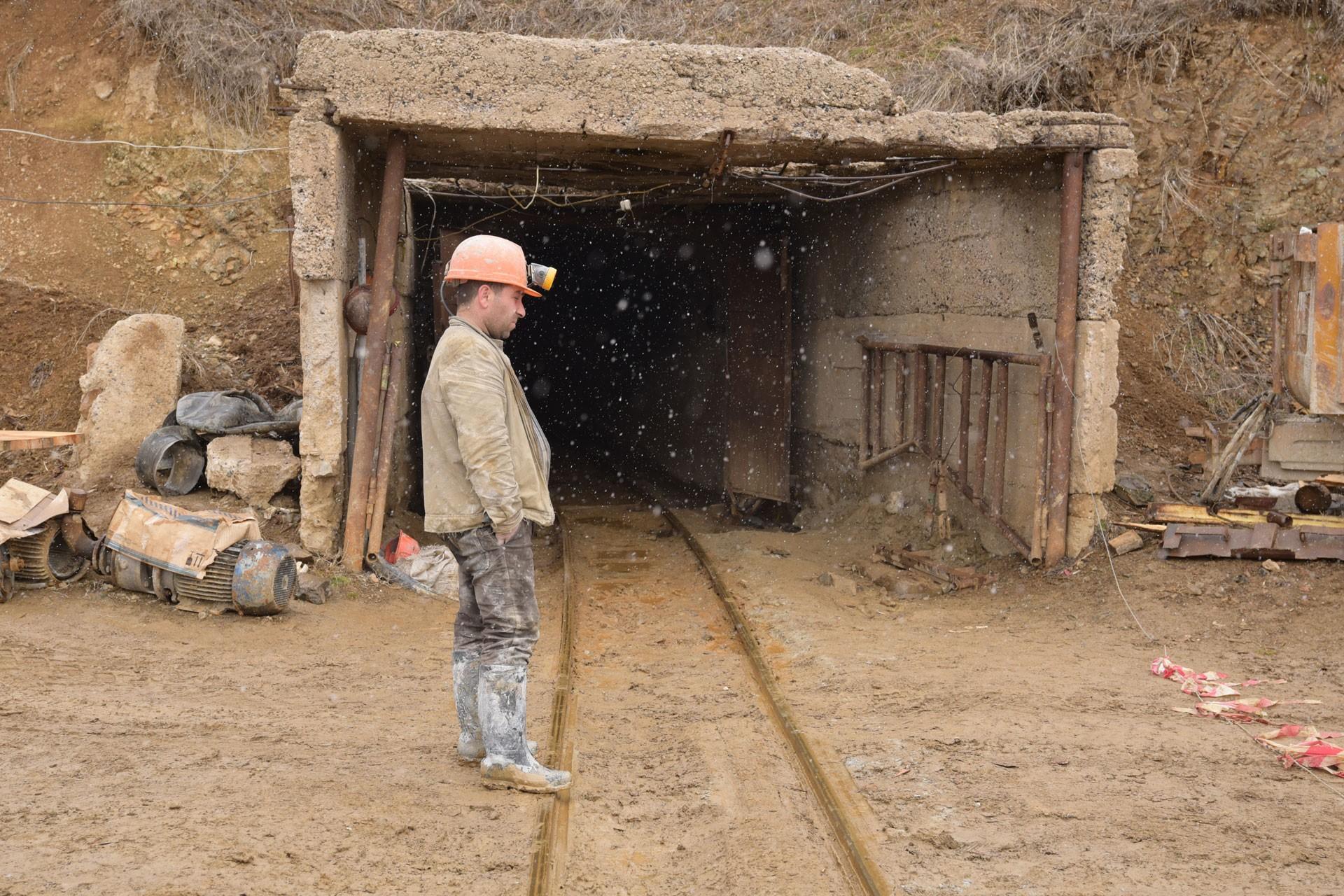
Meghradzor Gold Ltd. has operated the Meghradzor mine, located in Armenia’s Kotayk Province, since it was issued a permit in August 2012.
The company is wholly owned by Vardan Margaryan, a former director of the Sotk and Meghradzor mines.
Margaryan allowed Hetq access to the mine and to photograph the enrichment plant. He did refuse to be interviewed.
Margaryan denies any ties to government officials. However, Margaryan was involved in a 2015 plan to operate a mine in the Molokan village of Fioletovo, in Armenia’s Lori Province. Vardan Ayvazyan was the Minister of Nature Protection when the company Grand Redmond was issued an exploratory license.
A Hetq source in the mining business, who wished to remain anonymous, says that government officials were bribed to issue licenses and to guarantee smooth operations in return for company shares.
Where is Armenian Gold Exported?
Gold extracted in Armenia is set to Europe, especially Switzerland and Belgium. Sotk, Meghradzor and Mghart gold goes to Switzerland, and gold from the Shahumyan mine to Belgium.
Of note is the fact that Armenian gold is also bought and sold domestically. In 2016, when Meghradzor Gold wasn’t exporting, it sold some AMD 2 billion of gold and silver alloy to GPM Gold. The amount was around 196 kilograms. In 2017, it sold 26 kilograms, valued at AMD 478 million to GPM Gold. In 2016, one gram was worth 10,000 drams and 18,380 drams in 2017.
In addition to these countries, in 2017 Vayk Gold LLC sold precious metal ore containing 26.7 kilograms of gold to Assat LLC. The value was AMD 6.675 million. There is no data showing what Assat did with the ore.
AT-Metals LLC sold 10,855 tons of gold ore to the Armenian company Tom and Mir LLC (presently Min unt Mir LLC) and to the Kapan Mining and Recovery Enterprise. The value of the ore was AMD 493.428 million.
No Monitoring of Armenia’s Mineral Resources
There is no government body that knows why the twelve remaining mines aren’t being operated even though companies have been issued licenses to do so. Licenses are issued by the Ministry of Energy Infrastructures and Natural Resources.
We sent three inquiries to the ministry, asking why these mines aren’t operated, and received three different answers. None substantially answered the basic question. In February of this year, Deputy Minister of Energy Infrastructures and Natural Resources Hakob Vardanyan finally confessed that the ministry had no clue.
“You can get an answer from the Nature Protection and Mineral Resources Inspectorate,” was Vardanyan’s answer.
But the inspectorate also had no answer. The agency only had information on two companies granted a mining license – Lydian Armenia CJSC and Vayk Gold LLC – that had been inspected in 2018.
“Information concerning the non-operation of the other gold (gold-polymetallic) mines that have been granted licenses and the provision of information regarding the reasons why, can only be supplied after inspections, envisaged in instructions issued by the Prime Minister of Armenia, are carried out in the companies,” was the response sent by Inspectorate Deputy Head Marat Badalyan
Nevertheless, Hetq attempted to visit those non-operating mines and see what condition they were in.
Karaberd Mine

There’s an estimated 211 kilograms of gold and 367 kilograms of silver at the Karaberd open pit mine. Underground reserves are estimated at 1,233 kg of gold and 2,216 kg of silver. The last time ore was extracted was in 2015-2016. Assat LLC was issued an operating license in 2013 for a period of eleven years. The company’s sole shareholder is Aram Osikyan, a close associate of former Armenian Prime Minister Hovik Abrahamyan. Osikyan served as director of Argamik LLC, founded by Hovik Abrahamyan’s son Argam.
At first glance the village of Karaberd, nestled in a string of dales, appears uninhabited because most of the homes are in ruins and the doors locked. 32 families still live in the main section of the village. They are mainly senior citizens. 12 families live in another part of the village near the mine. Young families leave the village. There is no kindergarten, school, store, medical dispensary or cultural center. But there’s a gold mine in Karaberd that could have spurred local development.
Karaberd Mayor Yurik Shavelyan says that as early as 2012 Assat LLC sent promises, in writing, to the community, about the development projects it would undertake.
By doing so, Assat LLC was obligated to give the Karaberd Municipality 100,000 drams every month, starting from the second month of the mine’s operation, for the socio-economic development of the village. In addition, the company was to pay an amount not to exceed AMD 1 million for unforeseen municipal expenditures annually.
There’s an addendum to the main contract signed with the Ministry of Energy clearly stating that the company also had to allocate 400,000 drams worth of material assistance yearly to vulnerable village families. Even though the village has no kindergarten or school, the company was obligated to spend 200,000 drams yearly to purchase school supplies and toys, to spend 200,000 drams in community socio-economic projects, and when needed, and to allocate 200,000 drams to fix the local roads. All this remained on paper. The only time Assat LLC paid anything to the Karaberd Municipality was in 2016, to the tune of 600,000 drams. Afterwards, the company pulled up stakes and left.
In a telephone conversation with Hetq, Assat LLC owner Aram Osikyan said they extracted 800 tons of ore in 2015-2016 from the Karaberd mine and shipped it to the company’s Masis Gold Processing Plant. He says the company stopped operating due to a drop in gold prices. It was no longer profitable. Shipping the ore from Karaberd to the Masis Plant, a distance of 150 kilometers, was also costly. The company, however, could have built an enrichment plant at the mine site, thus avoiding transportation costs and guaranteeing continued extraction. Osikyan is waiting for the relaunch of the Armanis gold mine. If this happens the company will recommence operations.
Aramanis Gold Mine
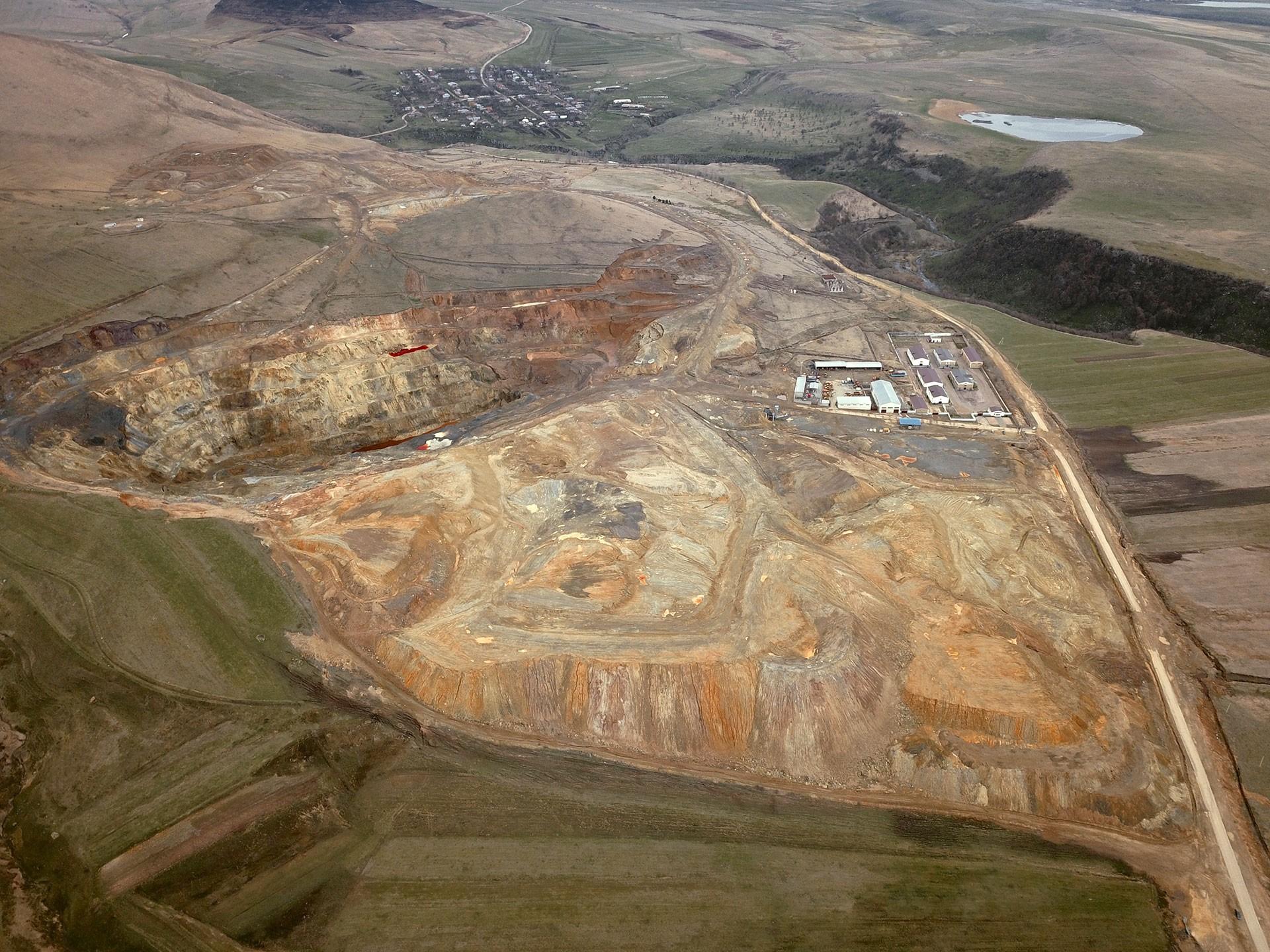
Ten years ago, residents of Aramanis were pulling trout out of the rivers that flows through their village. The fish have disappeared.
“The Ishkhan fish grow in clean water. There have been so many leaks from the tailings dam that the valley was polluted. You won’t find a single fish here,” said a Aramanis resident who wished to remain anonymous.
The Aramanis gold-polymetallic mine abuts the village. The tailings dam and enrichment plant are also close by. Sagamar CJSC has a license to operate the mine until 2049. The mine has been closed for the past five years. Only dug up hills and tailings dams remain. There is no information as to when the company will relaunch mining at the site. Despite the uncertainty, Sagamar wants to expand its territory and carry out geological surveys in the Stepanavan area near the basins of the Deghin and Sev Rivers from 2018 – 2010. The community has given its approval.
Global Metals LLC, the parent company of Sagamar CJSC, traces its roots to the offshore zone. It was founded in 2008 and registered in Cyprus. According to data we’ve obtained from the Cyprus Corporate Registry, Eulachon Limited, a company registered on the Isle of Mann, owns 98% of Global Metals. The other 2% is owned by KPG Holding Limited, registered in Belize.
In 2011, then Armenian President Serzh Sargsyan visited the Aramanis mine. A government press release on the visit notes that: “The proprietors of the NevaRus company which is engaged in the mining industry of Armenia and realizes investment projects through its two daughter enterprises – Sagamar and Molibdeni Ashkharh companies, noted that they would continue with their strategy of consistent implementation of their investment programs in the mining industry of Armenia.”
In other words, the Russian company NevaRus was the major stockholder at the time.
The Russian State Corporate Registry notes that one Kim Jung Men owns the shares of NevaRus. In 2007, NevaRus was listed as one of the shareholders of Bank Saint Petersburg. It’s no longer listed as a shareholder. In the list of company assets was the O’Key chain of supermarkets (O’Key LLC-Russia). As stated in 2012 by NevaRus investment manager Karen Ghazaryan (who also served as the director of Sagamar CJSC until September 2018), the operations of NevaRus include the O’Key supermarket chain, Saint Petersburg Bank, the Mega Auto dealership network, the Chaynaya Lojka restaurant and other assets in CIS nations.
Eulachon Limited, the owner of Sagamar, also shows up on the London Stock Exchange, as one of the shareholders of O’Key Group S.A. Russian sources and press reports point to the Russian magnate Dmitri Troitski as the owner of these assets.
When Hetq visited Aramanis, a lawyer and accountant from Sagamar tried to stop us from taking pictures, arguing that the company owned the entire area and that they wouldn’t allow us to photograph on private property.
In response to our inquiry, Stepanavan Mayor Mikayel Gharakeshishyan said that Sagamar CJSC had purchased 65.6 hectares of community land valued at 78.3 million drams. (The land was purchased in 2008, 2009 and 2017). The mayor added that the company leased six hectares for mining and pays 600,000 drams rent annually.
“From the first day of operations, Sagamar CJSC has carried about charitable projects. In particular, it has rebuilt the wrestling hall and has restored the earthquake damaged portion of the Stepan Shahumyan Memorial. The company has asphalted the Stepanavan-Armanis roadway, has repaired the roof of the Aramanis School’s sports auditorium, has replaced the school’s doors and windows and the cafeteria’s roof, has installed new water pipes for the school, and has gifted three computers and six computer desks to the school,” says Stepanavan Mayor Gharakeshishyan.
The municipality doesn’t know whether the Aramanis mine will reopen or not. The municipality also has no idea who the true shareholders of Sagamar CJSC, the mine’s operator, are. The company has not responded to our written inquiries.
Arjout Gold Mine
The Arjout gold mine is located in Armenia’s northern Lori Province, some 12 kilometers from the town of Vanadzor and four kilometers from the village of Arjout.
Baktek Eco LLC was granted an operator’s permit for the mine in 2014. The company’s sole shareholder is Grigor Badiryan, the Honorary Consul of the Kingdom of Belgium in Armenia. He served as an adviser to former Armenia Chief of Police Vladimir Gasparyan and was a member of Armenia’s Council of Justice and the Public Council. The company’s license is good until 2040.
The Arjout mine is said to contain 2,213 tons of ore that contains 3,081 kg of gold, 17.64 tons of silver and 6,821 tons of copper. In an agreement signed with the Ministry of Energy Infrastructures and Natural Resources, the company says it will invest some 385 million drams ($943,000) into the mine.
Arjout Mayor Vardan Mkrtchyan told Hetq that the company has yet to carry out any projects in the village. The mine, he notes, stands untouched.
Azatek Gold Mine
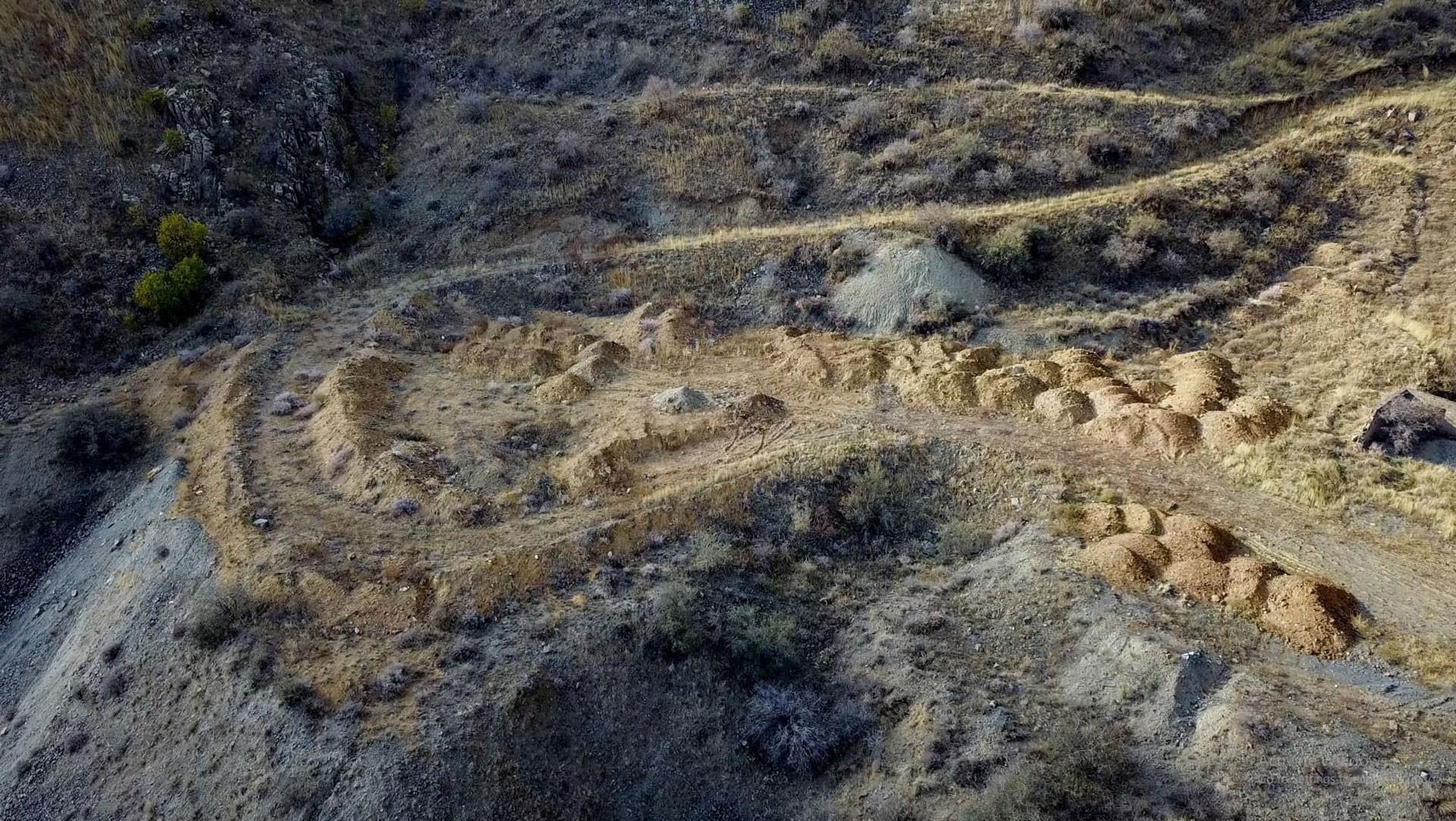
The mine is located in Armenia’s Vayots Dzor Province. The Ministry of Energy Infrastructures and Natural Resources issued an operator’s permit, expiring in 2037, to Vayk Gold LLC in 2012.
Former Armenian Minister of Nature Protection (2001-2007) and Republican Party of Armenia MP Vardan Ayvazyan is the driving force behind the mine. Ayvazyan was reelected to the parliament in May 2012. He founded Vayk Gold LLC one month later and owned shares in the company for another six months. It was in November of 2012 that the company was issued an operator’s license for the mine. Ayvazyan subsequently transferred his shares to his son Souren. One year later, an offshore company called Qoeur Gold Armenia surfaced and it obtained 80% of Vayk Gold’s stock. Souren Ayvazyan then transferred his shares to Norayr Zohrabyan, registered as a resident of the town of Charentsavan. Vardan Ayvazyan is also registered in Charentsavan.
Changes to the company’s shareholder base took place in December 2018. The Ayvazyan family was no longer officially listed as shareholders. Today, Qoeur Gold Holding LLC, registered in the United Kingdom, owns 80% of Vayk Gold shares. The other 20% is still owned by Norayr Zohrabyan.
Qoeur Gold Holding is a relatively new company, registered in London on June 27, 2018. A British citizen is the founder/shareholder. On July 4, 2018 the company received a $55 million loan from the British companies Boreas Wind Group and Geoenergy. Representatives of the lending companies then assumed management of Kor Gold Holding’s shares. In November 2018, three company shareholders were registered.
Reserves have been extracted from the Azatek gold mine, but illegally. The site where the extraction took place is located in the Zaritap municipality. Only traces of past mining operations remain today – pits in the landscape and mounds of collected dirt. Those lands allocated by communities to the company were only to be used for geological surveys. Zoning changes were needed for outright mining, but those changes were never officially made.
Zaritap Municipality Chief of Staff Shmavon Azatyan showed us the minutes of the municipal council sessions and mayoral meetings regarding the mine. Accordingly, on September 25, 2014 the municipal council approved the leasing of 55 hectares to Vayk Gold for a trial period of three months. The company was to conduct geological surveys and was obligated to pay the municipality 852,000 in rent. Azatyan says no other lease contract was entered into with Vayk Gold.
When talking to residents of Azatek and Zaritap, it was evident that they knew nothing of the gold mine’s operation. They had merely heard rumors that there was gold somewhere in the area but that it wasn’t being mined. Azatek Mayor Sirak Hovsepyan even confessed that public hearings about leasing land to Vayk Gold for exploratory purposes never took place. Public hearings did take place in Zaritap, but when Hetq asked for the transcripts, municipality employees said they didn’t know where they were.
After the 2018 change in government in Armenia, the new prime minister issued a directive calling for inspections of all the country’s metal mines. The Inspectorate of Nature Protection and Mineral Resources started with Vayk Gold.
The inspectorate uncovered a number of violations at the mine. It also discovered that the company extracted 1,330 tons of ore in December 2017. The ore contained 11.31 kilograms of gold, 84.5kilograms of silver, and 5.25 tons of copper. The usable ores extracted from Azatek were worth 218 million drams.
A criminal was launched by Armenia’s Prosecutor General’s Office (Department for the Protection of State Interests) on the basis of Article 291 (Breach of rules for protection and use of the lithosphere) Point 2 of the Criminal Code (Use of the lithosphere with breach of rules for protection and use of the lithosphere, or with deviating from such projects, or without a contract, which caused significant damage to human health, to the environment, to mineral resources, constructions and buildings contained in the lithosphere, is punished with a fine in the amount of 700 to 1000 minimal salaries, or with imprisonment for up to 1 year, with or without deprivation of the right to hold certain posts or practice certain activities for up to 5 years.) and Article 308 (Abuse of Official Authority) Point 2 (The same action which negligently caused grave consequences, is punished with imprisonment for 2-6 years, with deprivation of the right to hold certain posts or practice certain activities for up to 3 years.)
Responsibility for the preliminary investigation was handed to the Investigative Committee (IC). IC Press Spokesperson Naira Harutyunyan told Hetq that the case is in the preliminary stage and that a comprehensive environmental and technical construction evaluation has been ordered. The results are pending.
The inspectorate approved a decision to ban Vayk Gold from carrying out mining operations. The inspectorate also wrote to the Ministry of Energy Infrastructures and Natural Resources demanding that it retract the company’s mining permit. The permit still stands. In response to our inquiry, the ministry’s acting chief secretary, Artashes Kirakosyan replied that, “The Investigative Committee’s General Department of Examination has launched a criminal case regarding the violations noted in your letter.”
Sofi-Bena Gold-Polymetallic Mine
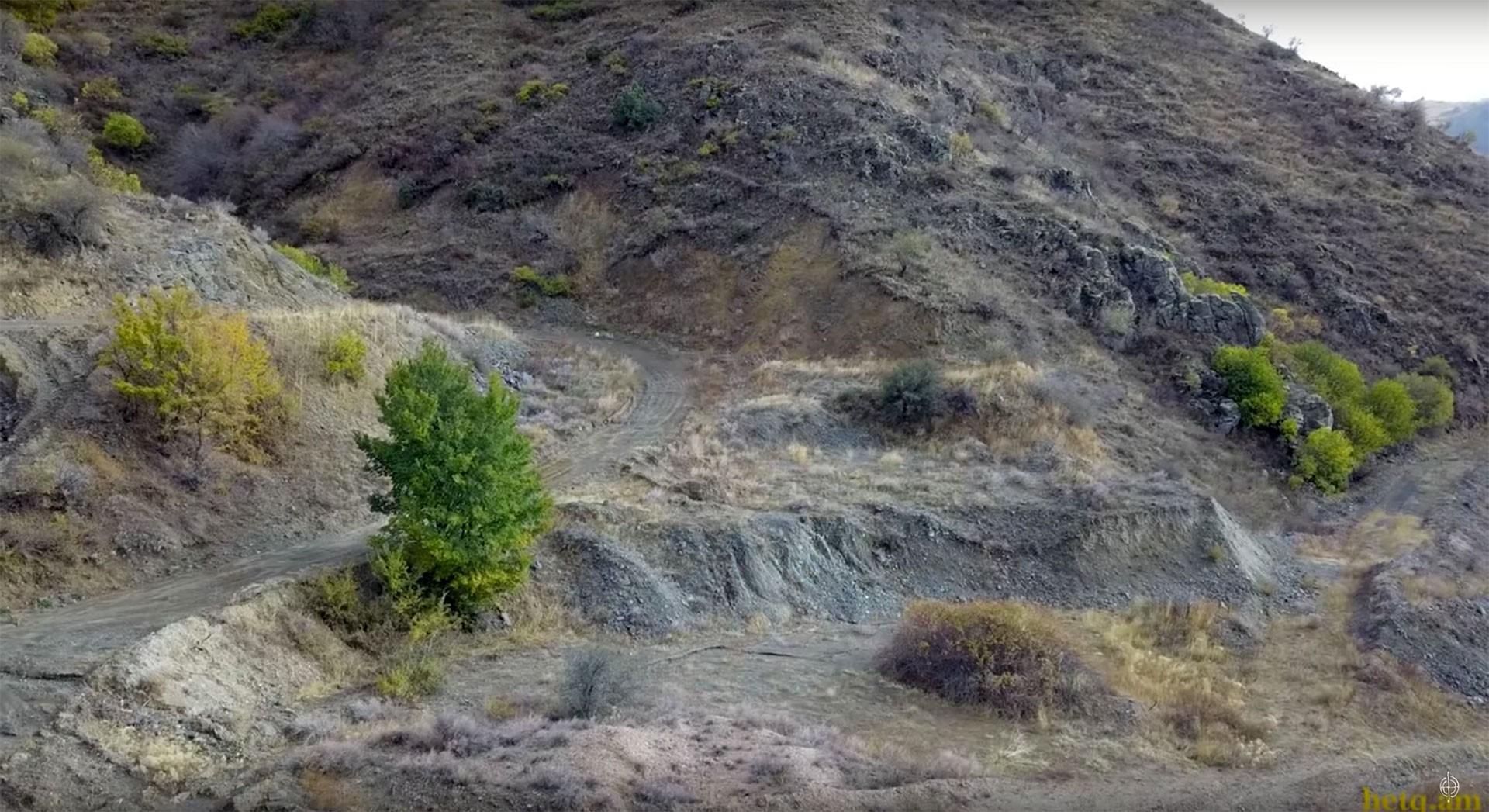
The Ayvazyan family also has a stake in Vardani Zartonk LLC, the company granted an extraction license for the Sofi-Bena mine in Vayots Dzor Province. Vardan Ayvazyan’s son Souren owns 40% of the stock. Hrach Hovhannisyan owns another 40% and 20% is owned by attorney Artashes Kakosyan.
Vardani Zartonk LLC was issued the mining permit for the Sofi-Bena site, located in Zaritap, in 2012. The permit runs until 2026. According to the Zaritap Municipality, this company only has permission to carry out exploratory work in the community and isn’t actively engaged in mining.
Mines proliferate in Syunik, Armenia’s most southern province. Five companies have the right to operate gold-polymetallic mines in the province but aren’t at the moment. Some of the mines are in the Kapan area and fall within the Arevik National Park.
Upper Vardanidzor Gold-Polymetallic Mine
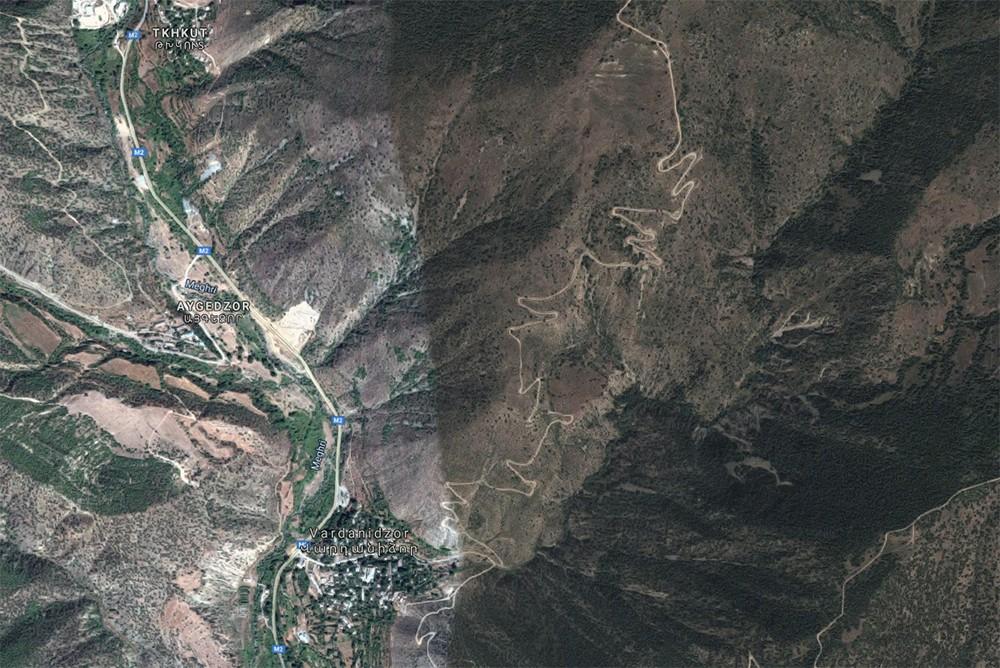
Gharagoulyanner CJSC was given a 37-year permit to operate this mine in 2016.
Levon Ghazazyan owns 25% of the company’s stock, Souren Hakobyan-40% and Armenoush Galstyan-35%
Armenoush Galstyan is the wife of Roland Ghonyan, a former MP and stockholder of Ler-Eks, a company owned by the Zangezur Copper Molybdenum Combine. Levon Ghazazyan serves as company director. Residents of the Meghri area organized a signature petition against the mine.
Lichkvaz-Tey Gold Mine
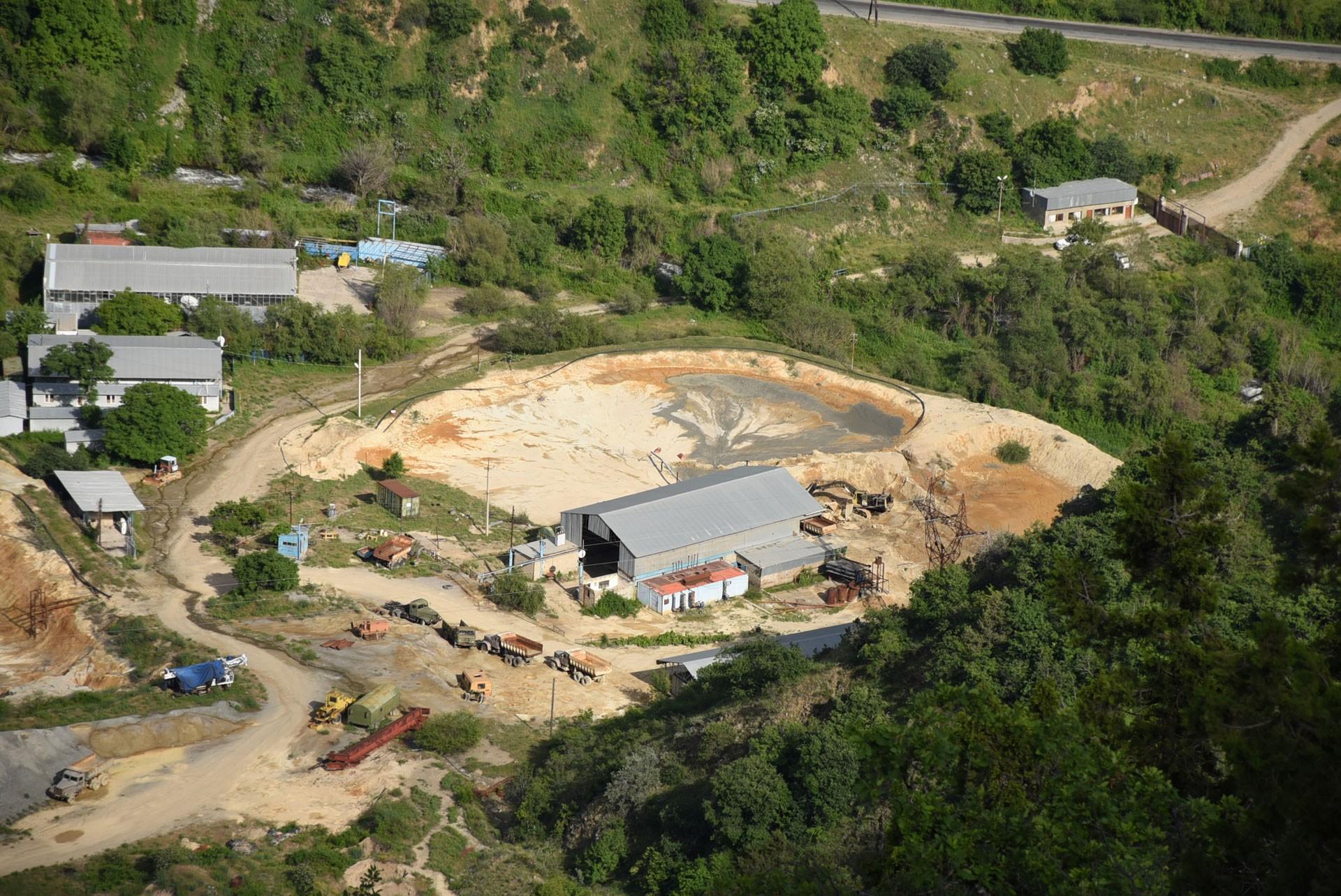
Lichkvaz CJSC was granted a permit to operate the mine in 2012. The Lichkvaz gold mine is located some 70 kms from the Syunik town of Kapan. According to its charter, the company was founded by LV Gold Limited. The Dutch Corporate Registry says the LV Gold is defunct and lists Global Metals (Arm) Limited, registered in Cyprus, as one of its shareholders. (Global Metals also owns shares in Sagamar.)
In fact, it was Karen Ghazaryan, a former Sagamar director and representative that signed the Lichkvaz-Tey permit contract with the Ministry of Energy Infrastructures and Natural Resources.
Meghrasar Gold Mine

AT Metals LLC received a 2014-2022 extraction permit for the mine, located on lands owned by the communities of Tashtoun and Lichk communities. One of the company’s shareholders is Hamlet Hovsepyan, who serves as an adviser to former Armenian Prime Ministers Hovik Abrahamyan and Karen Karapetyan, and his two sons. Together, they own 48.8% of the stock. The remaining 50.2% is owned by two Russian companies. AT Metals received the mining permit when Hamlet Hovsepyan was Prime Minister Hovik Abrahamyan’s adviser.
The company worked the mine in 2016 and 2017. In 2016 it extracted 10,855 tons of ore valued at AMD 493 million (roughly $1 million). In 2017, it extracted 14,257 tons of gold ore valued at AMD 279 million ($587,000).
On June 17, 2019, Armenia’s Prosecutor General’s Office stated that illegal gold mining had occurred within the boundaries of the Arevik National Park’s Specially Protected Area and that a criminal case had been launched.
Voskedzor Gold-Polymetallic Mine
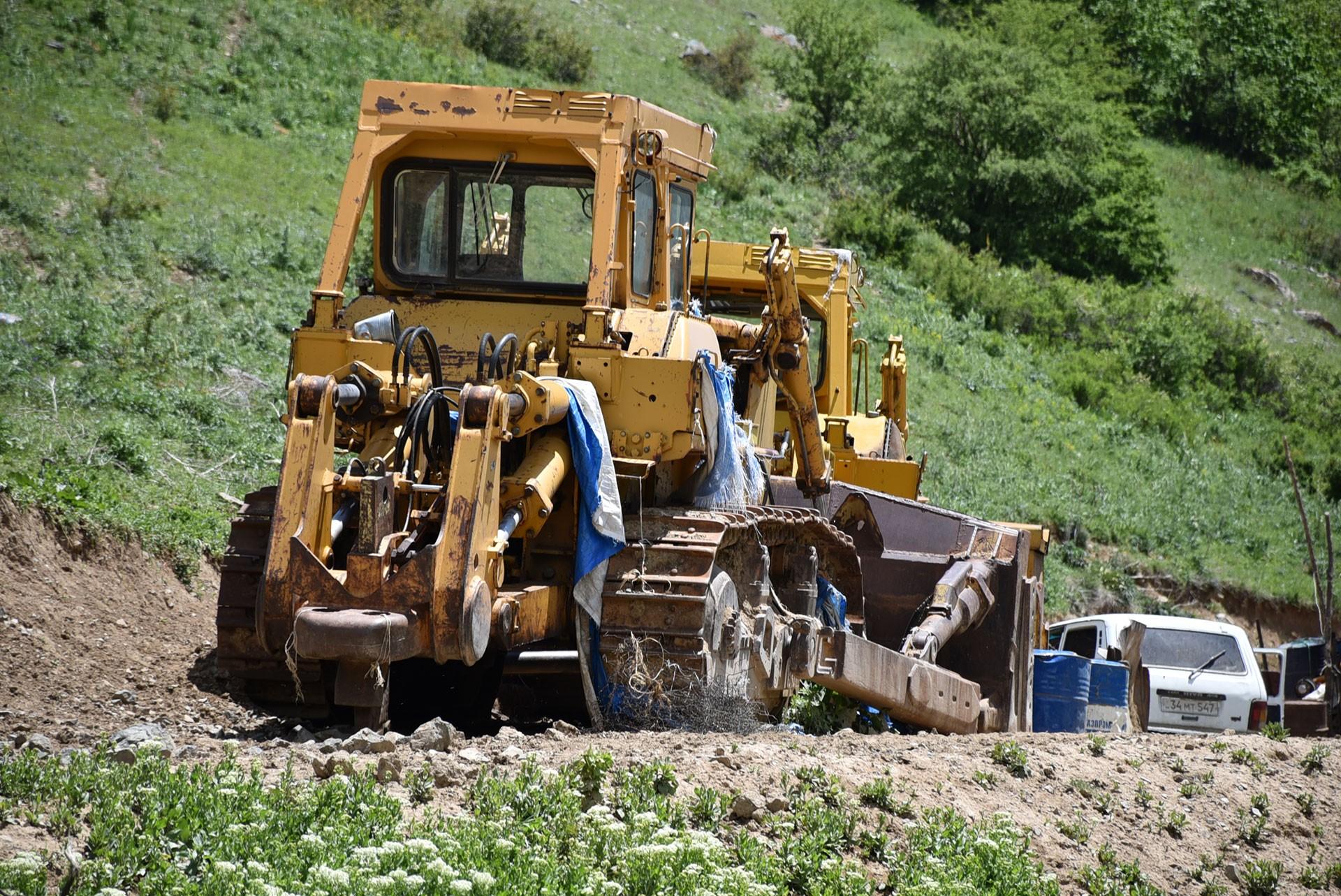
Geghi Gold LLC received an extraction license for the Voskedzor mine in 2016. The license is good until 2045. Suren Khachatryan, the Syunik Provincial Governor from 2004-2013 (with a one-year break in 2013-2014), owns the company.
Bardzradir (Mazra) Gold Mine
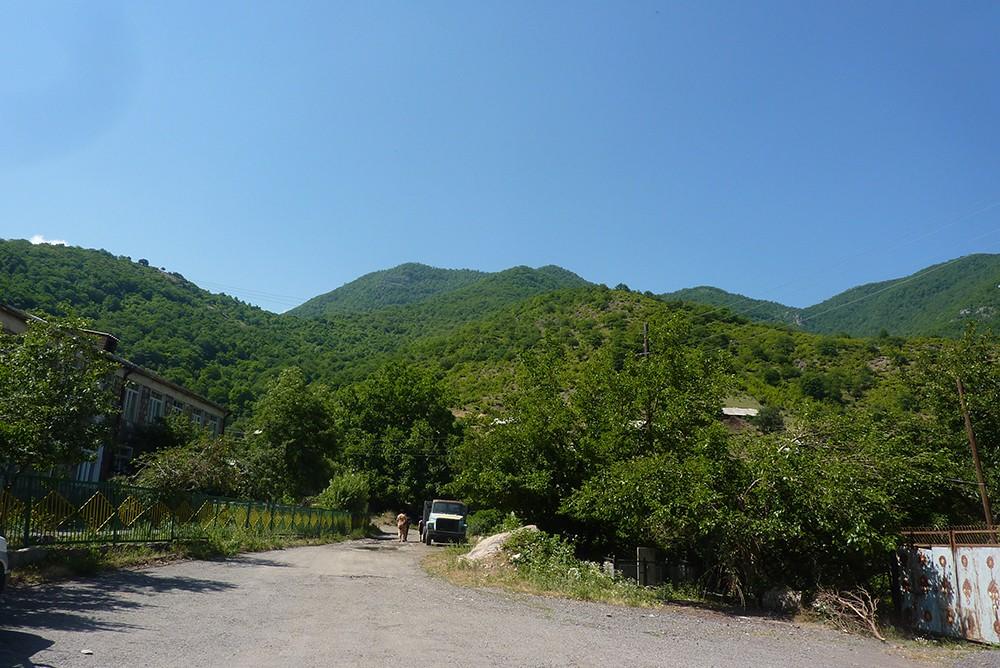
Hrashk Metagh LLC was granted a license to exploit the mine in 2016, for a period of 31 years. The license deal stipulates that the company must extract 30,000 tons of ore yearly.
The company’s sole shareholder is 29-year-old Anna Sahakyan. On July 4, 2018, the company petitioned the Ministry of Energy infrastructures and Natural Resources to pull out of the deal. On September 20, 2018, the ministry approved the petition and the contract with Hrashk Metagh was terminated.
Prior to this, on September 7, 2018, Minister Grigoryan issued an administrative fine against Hrashk Metagh Director Sargis Barseghyan in the amount of 150,000 drams. The reason for the fine was because the company failed in its obligation to publicly disclose its reports on its mining operations in 2017.
Toukhmanouk Gold Mine
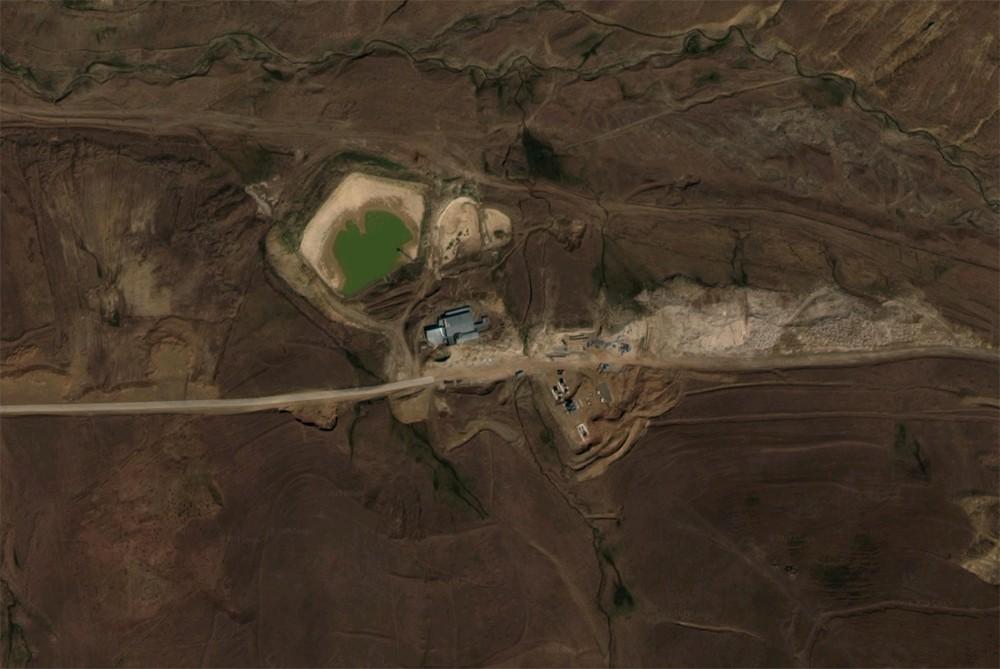
Toukhmanouk was the only operating gold mine in Armenia’s Aragatzotn Province. Mego Gold LLC was the company operating the mine located not far from the town of Aparan on land belonging to the village of Melikgyugh. The mine has been idle for the past six years. Melikgyugh Mayor Derenik Shahbazyan says Mego Gold leased 226 hectares of community land at a lease price of 14 million drams per year but hasn’t paid for several years. The company owes Melikgyugh 50 million drams in back rent. The community has taken the matter to the courts.
A small reprocessing plant also operated in the village. Mayor Shahbazyan calls the plant a “mill”. The plant led to a tailings dam not far from the village. The site is neither monitored nor fenced off. Shahbazyan confesses that livestock often enter the site.
Mego Gold LLC is owned by G-G-C-R Mining LLC, registered in the U.S. state of Delaware, an offshore zone. Shahbazyan also mentions Armenian Assembly of America Board of Trustees Co-Chairman Van Krikorian as a shareholder.
In 2017, then Armenian President Serzh Sargsyan awarded Krikorian a presidential medal of honor for his significant contribution in strengthening the bonds between Armenia and the diaspora.
Mego Gold LLC is now embroiled in several court cases.
Amulsar Mine
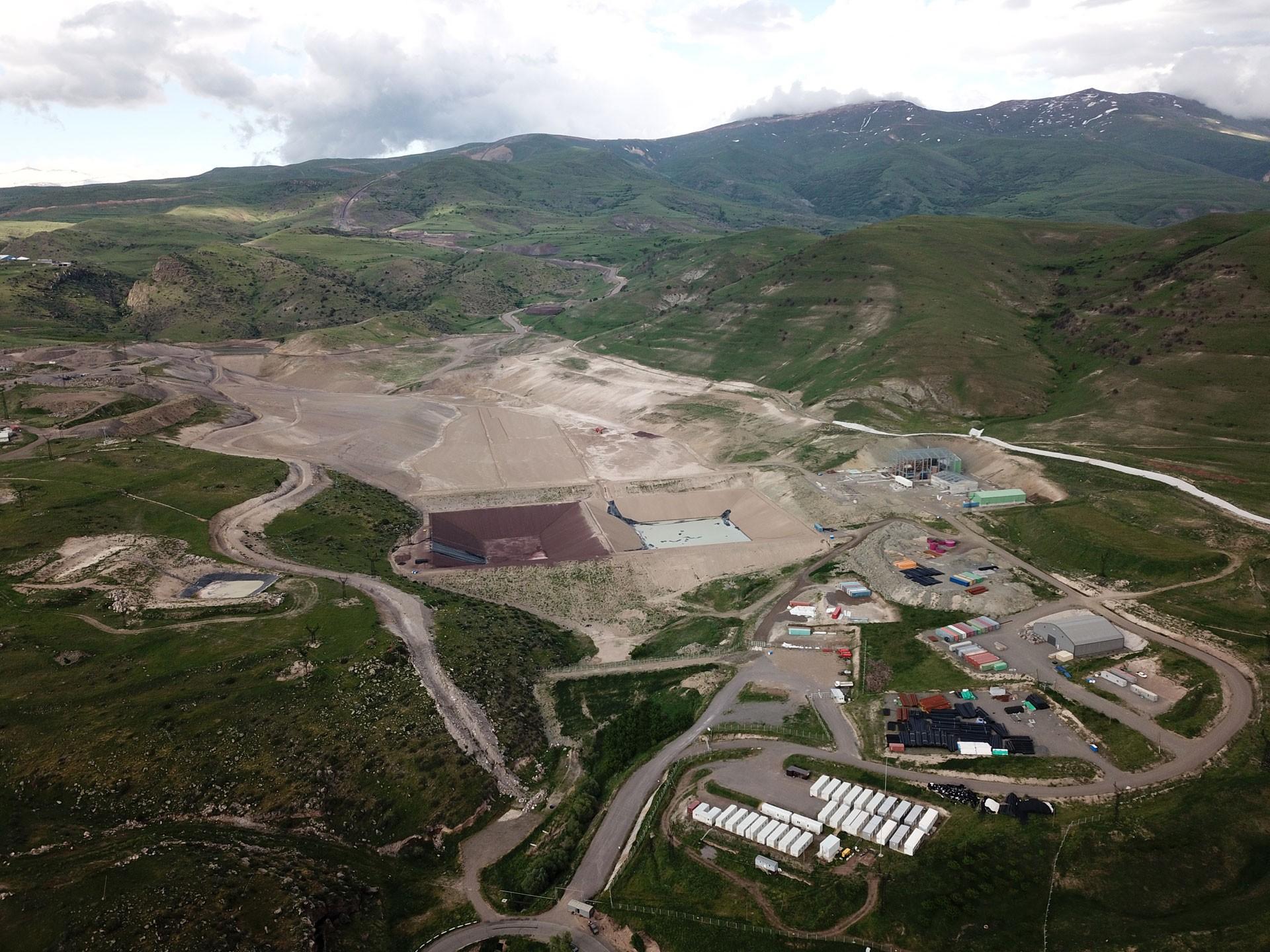
Abandoned mines and giant tailings dams, coupled with unpaid taxes and disappearing villages, have turned off many in Armenia towards the mining sector. These examples and the environmental risks that mining poses have raised concerns throughout the country. It’s for these reasons that activists and residents in mining-impacted communities are campaigning voice to see that the same doesn’t hold true in Amulsar.
For the past year, activists and community residents have prevented Lydian Armenia CJSC from proceeding with plans to launch the Amulsar mine located near the resort town of Jermouk. Mine opponents have blocked roads leading to the mine and have not allowed company trucks to enter the site. Work has come to a standstill.
“Due to the illegal blocking of the roads to Amulsar, the company has sustained huge losses and continues to do so. Lydian publishes the amounts of these ongoing losses in its quarterly reports. Our priority right now is the restoration of law and guaranteeing free access to the Amulsar site. Only afterwards will it be possible to draft a final evaluation of the situation and to calculate the company’s total losses of the period,” Lydian management wrote in response to our inquiry.
Lydian Armenia also has offshore roots. Lydian International, which wholly owns Lydian Armenia, is registered in the Jersey, the largest of the Jersey Islands. Thus, the entire list of Lydian International’s shareholders isn’t public knowledge. Several past Hetq attempts to get the entire list of names were unsuccessful. This time was no different. The company skirted the issue and refused to divulge any data.
“100% of the shares of Lydian Armenia CJSC are owned by Lydian International. Lydian International is an open stock company traded on the Toronto (Canada) Stock Exchange. Major shareholders include Resource Capital Funds, Orion Mine Finance, Franklin Resources, the European Bank for Reconstruction and Development (ERBD), and other institutional and private shareholders,” was the response Lydian International sent to Hetq.
At the time of initial operations[1], current Armenian President Armen Sarkissian was a member of its Board of Directors. Sarkissian also served as Armenia’s Ambassador to Great Britain for many years.
Armenia’s Revolution Threatens the Mining Sector
In 2017, Armenia became a member of the Extractive Industries Transparency Initiative (EITI), a global standard for the good governance of oil, gas and mineral resources. It was only after Armenia signed on to the EITI that we were able to obtain certain other information on mining extraction and exports. Prior to this, such information was regarded as “trade secrets” and never released, even by government agencies.
EITI standards also call for the release of the names of the real shareholders of metal mines.
On April 2, 2019, the Armenian National Assembly voted on and adopted a package of draft amendments regulating the entire process regulating the disclosure of beneficial owners of metal mining companies.
The EITI standard requires that the EITI member states publicly register the beneficial owners of the extractive industries as of January 1, 2020.
By law, however, the threshold for such disclosure is ownership of more than 10% of company shares. Those owning less can remain in the shadows. The degree to which this standard will facilitate shareholder transparency remains to be seen. Those wishing to hide their identity can still do so by registering stock in the name of family members. The EITI standard has no contingencies for such schemes.
Mining plays an important role in Armenia’s economy. According to the country’s Statistical Committee, the mining sector’s contribution to the GDP rose from 2.6% to 3.2% between 2010 and 2017. Mining ranks in 12th place in terms of the top twenty GDP sectors.
All the mining permits now in force were issued prior to the April 2018 “Velvet Revolution”. None have been issued since.
The government of Nikol Pashinyan is trying to take steps to regulate the sector but, so far, little of practical value has been achieved. No substantial change in the mining sector has yet taken place. As noted above, Prime Minister Pashinyan has ordered that all mining operations in Armenia be investigated.
“We cannot say that we are closing the door on our underground resources and will never utilize them. However, we cannot allow these resources to be used in a manner that violates environmental and legal rules,” Pashinyan said at a May 2018 cabinet session.
The Crossroads of Armenian and Georgian Gold
The owners of some companies issued a permit to operate mines in Armenia are doing the same in Georgia. Eulachon Limited, the Isle of Mann registered company that owns the one operating the Aramanis mine in Armenia, owns almost 90% of the largest working mine in Georgia.
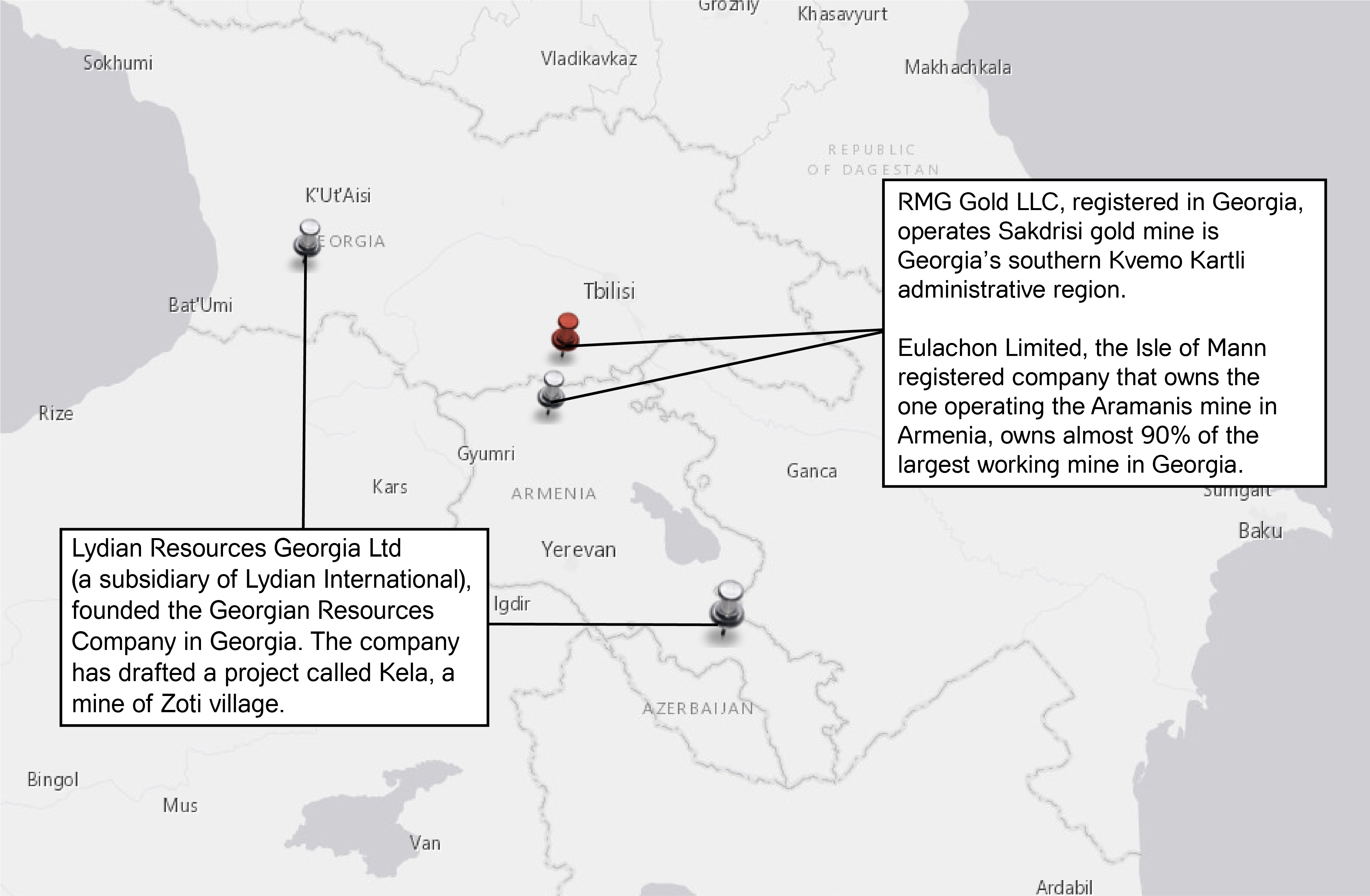
The Sakdrisi gold mine is located in Georgia’s southern Kvemo Kartli administrative region, not far from the small town of Bolnisi. RMG Gold LLC, registered in Georgia, operates the mine.
Hetq was able to obtain documents allowing us to trace a map of the company’s shareholders in the offshore zone that took us all the way to Eulachon Limited. After this, the offshore zone’s doors closed in our face. It is here that the intersection of Armenian and Georgian mining interests becomes evident.
A Georgian State Registry document notes that Dmitri Troitski, the man behind several companies involved in the Aramanis gold mine, also heads the supervisory council of the Georgian company appearing in the mine schematic.
The Sakdrisi mine was once a part of the GeoProMining family of companies.
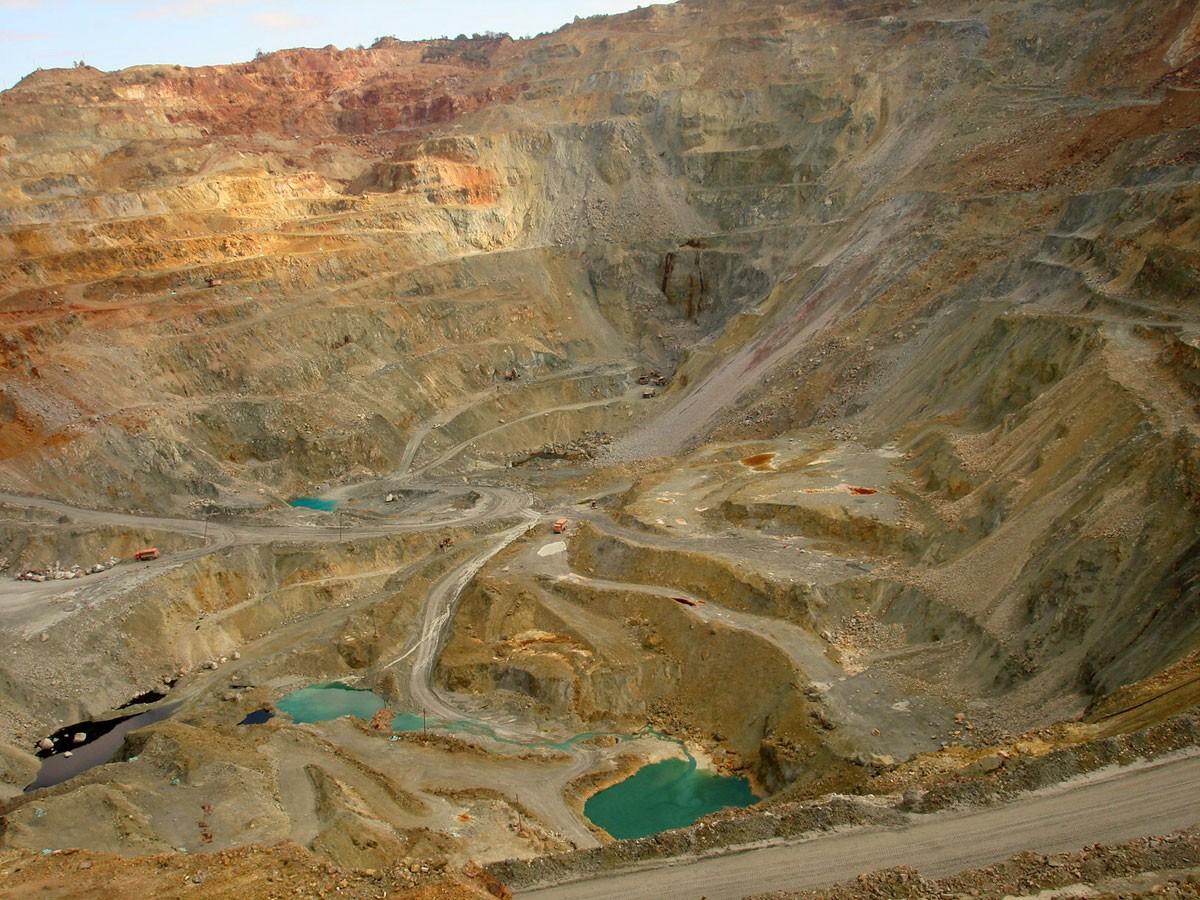
RMG Gold’s Executive Director is Tornike Lipartia, who contributed 50,000 Georgia Lari ($18,500) to Salome Zourabichvili’s 2018 presidential election campaign. Zourabichvili went on to win the run-off vote and now serves as Georgian president.
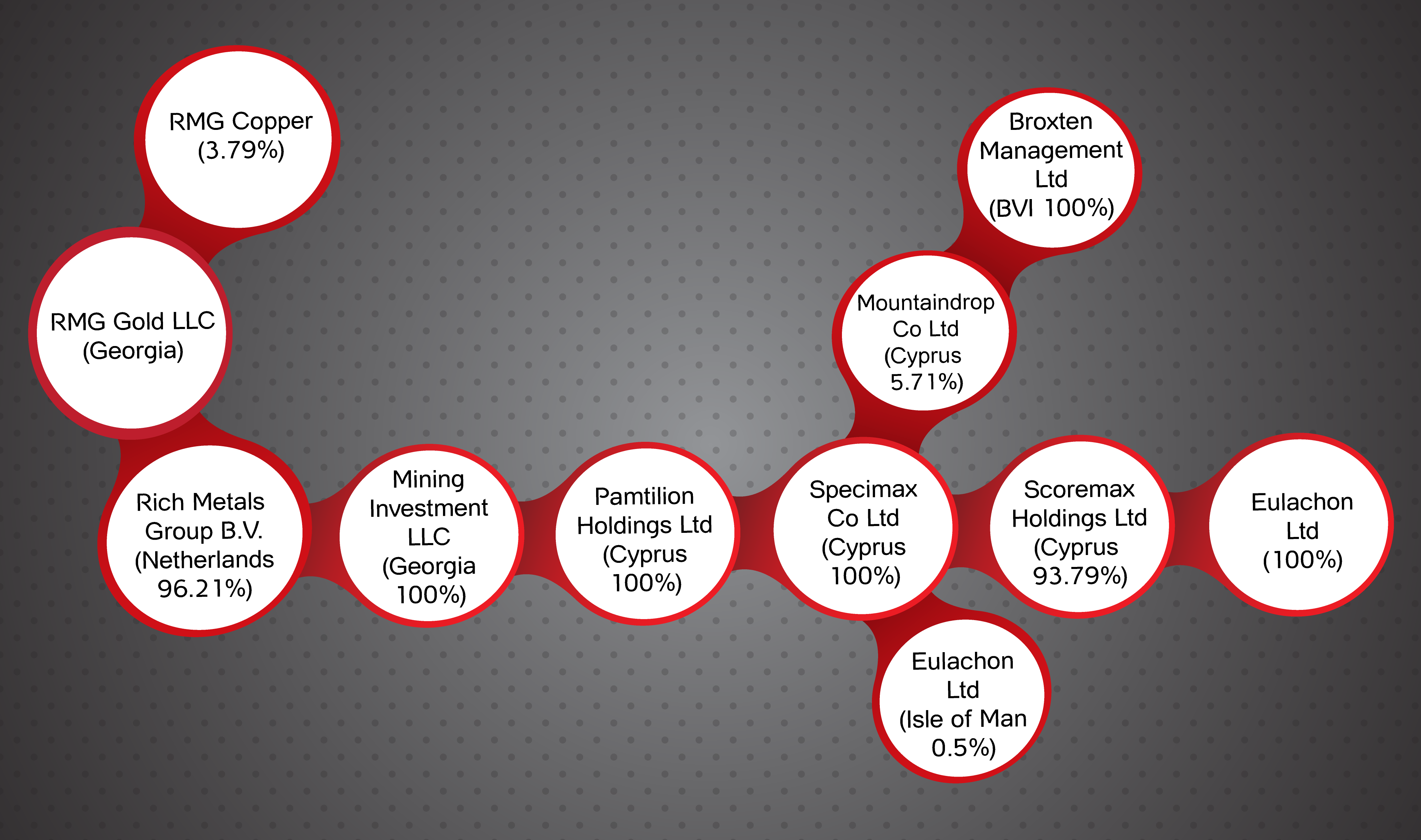
Lydian International also has plans in Georgia and has drafted a project called Kela.
In 2010, Lydian Resources Georgia Limited (a subsidiary of Lydian International), founded the Georgian Resources Company in Georgia. Georgia’s Ministry of Energy and Natural Resources disclosed that it issues an exploratory mining permit to Georgian Resources Company on October 4, 2100 covering 720.25 hectares of Zoti village land in the country’s Chokhatauri region.
Lydian Resources Georgia Limited has yet to file any reports with the Georgia government regarding what the geological surveys revealed. The company also hasn’t drafted any extraction plan for the area. For neglecting its license obligations, the Georgian government has launched administrative proceedings against Lydian Resources Georgia.
On February 20, 2017, Georgia’s State Environmental Inspectorate petitioned the Tbilisi Civil Court, arguing that the company had violated Article 57/3 of Georgia’s Administrative Code; namely that it violated the conditions of the license and that it didn’t present mine reserve reports or a extraction plan.
On April 19, 2017, the Tbilisi court sustained the charges against the company and issued a warning. The company filed an appeal, but the lower court’s ruling was upheld.
“Lydian’s sister company in Georgia carries out exploratory work on the basis of corresponding permits. The project is in the initial phase of exploratory work and the project’s future pace depends on the result of this work,” Lydian responded to a Hetq inquiry.
[1] Correction – The original article notes that “during the company’s formation and initial operation” Armen Sargsyan was a member of the board of trustees. His inclusion in the board of trustees refers the company’s operation after receiving a mining permit; after September 26, 2012, and not during the formation of Lydian Armenia CJSC. We apologize for the error.
-----------------------------------------------------------------------------------------------------------------
By Kristine Aghalaryan
Edited by Edik Baghdasaryan
Photo, video and video editing by Saro Baghdasaryan
Lika Zakashvili contributed from Georgia.
Designed by Ani Hovhannisyan
Fact checked by Hrant Galstyan
Legal screened by Grisha Balasanyan
Translated by Hrant Gadarigian
Other support by Ani Sargsyan, Tirayr Muradyan, Larisa Paremuzyan, Vahe Sarukhanyan, Marine Martirosyan
The investigation was enabled by n-vestigate network, (n-vestigate.net)

 Videos
Videos Photos
Photos




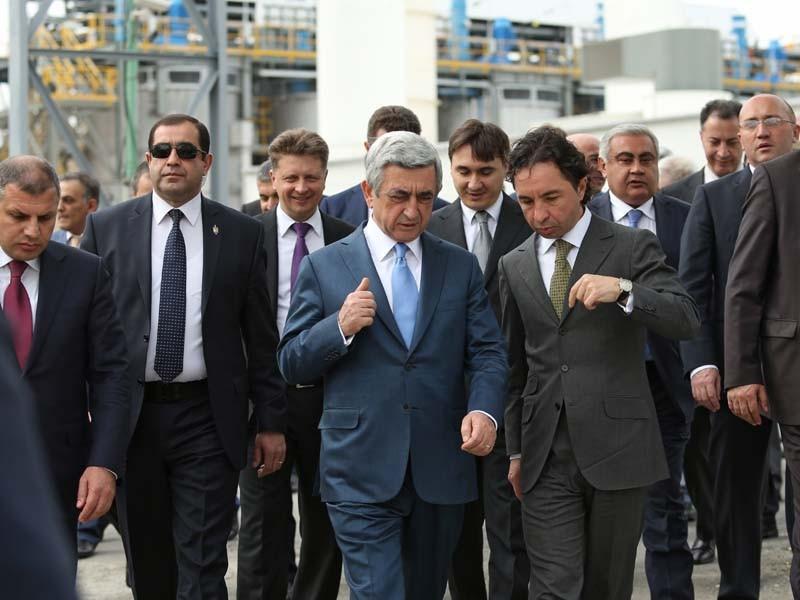

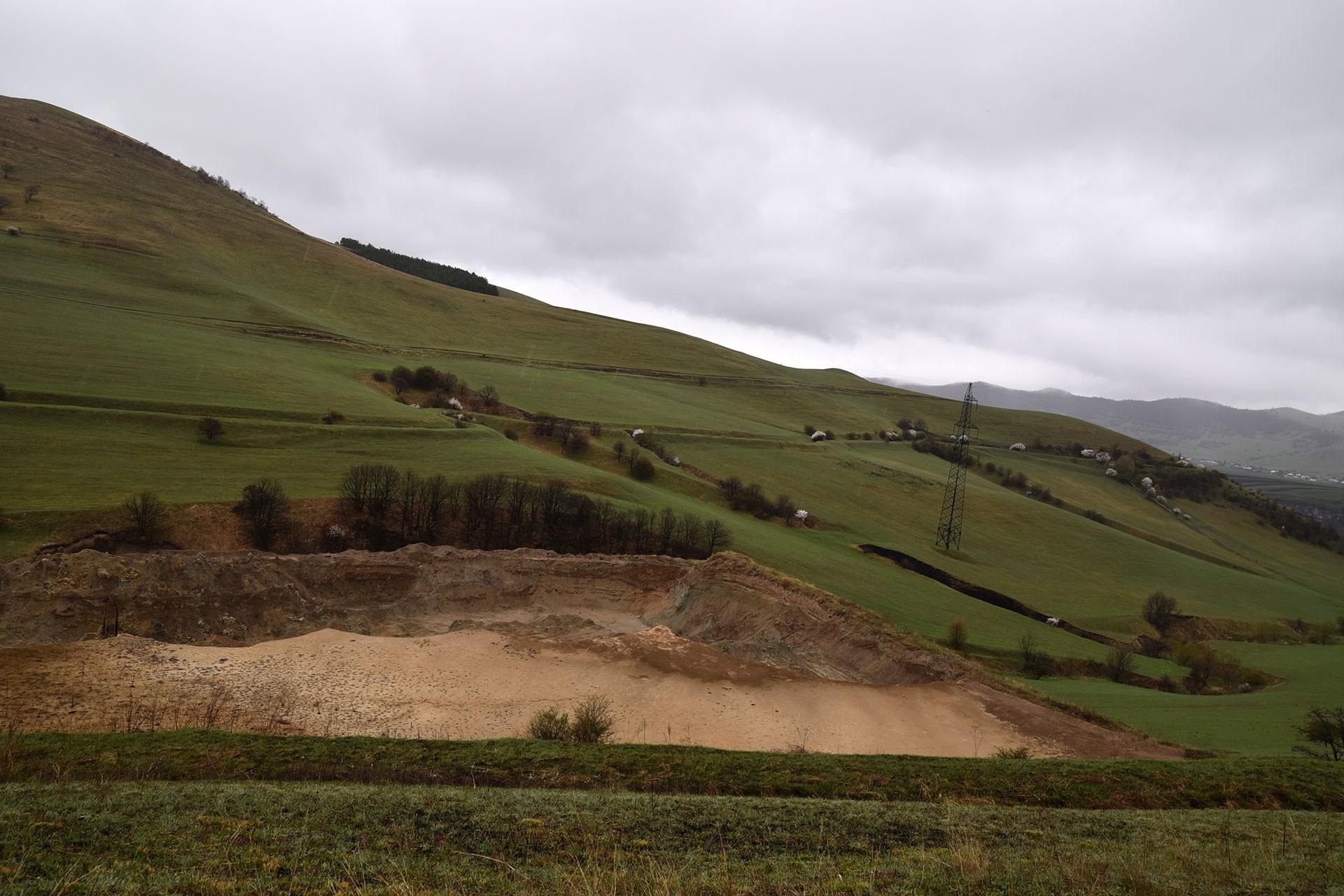
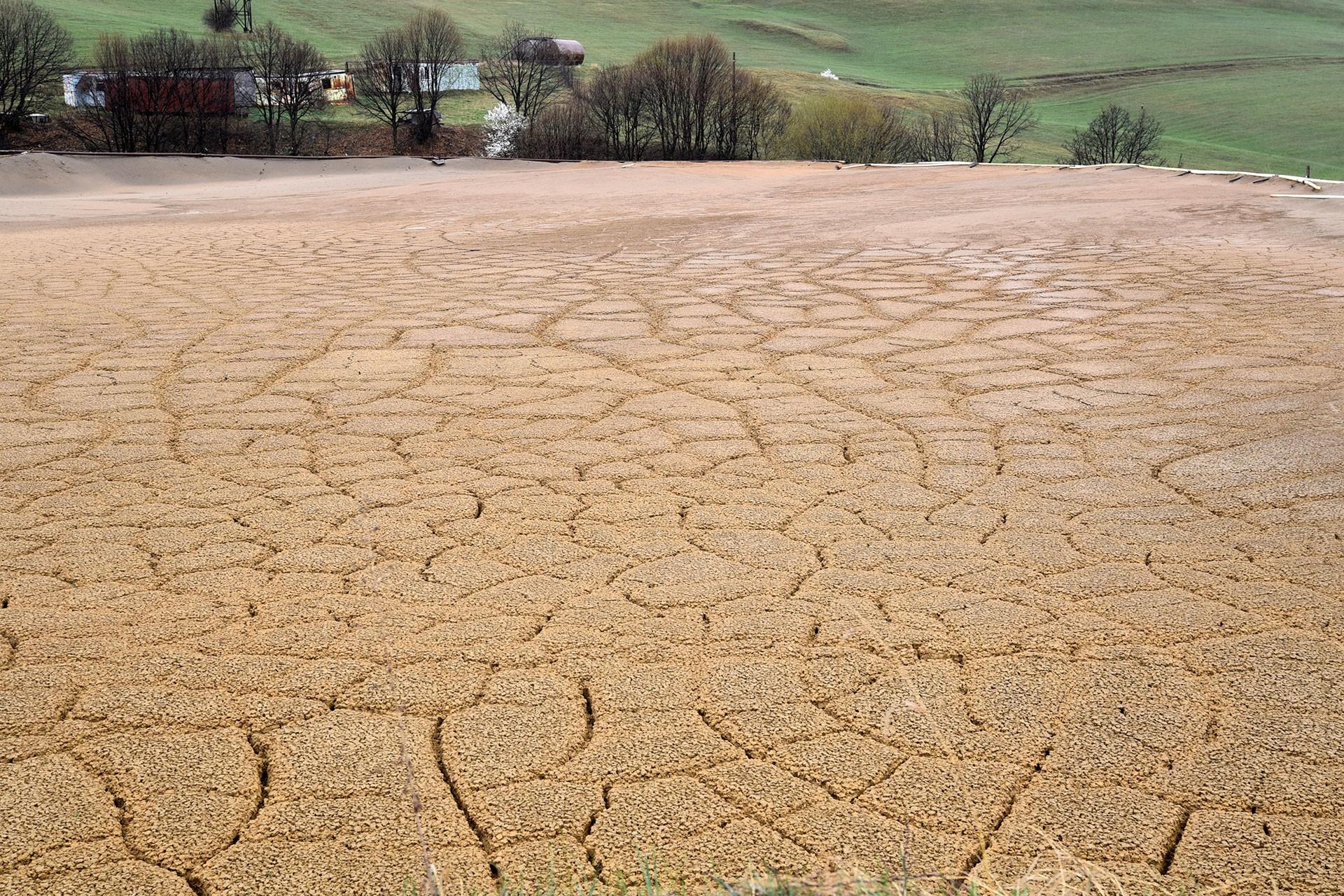
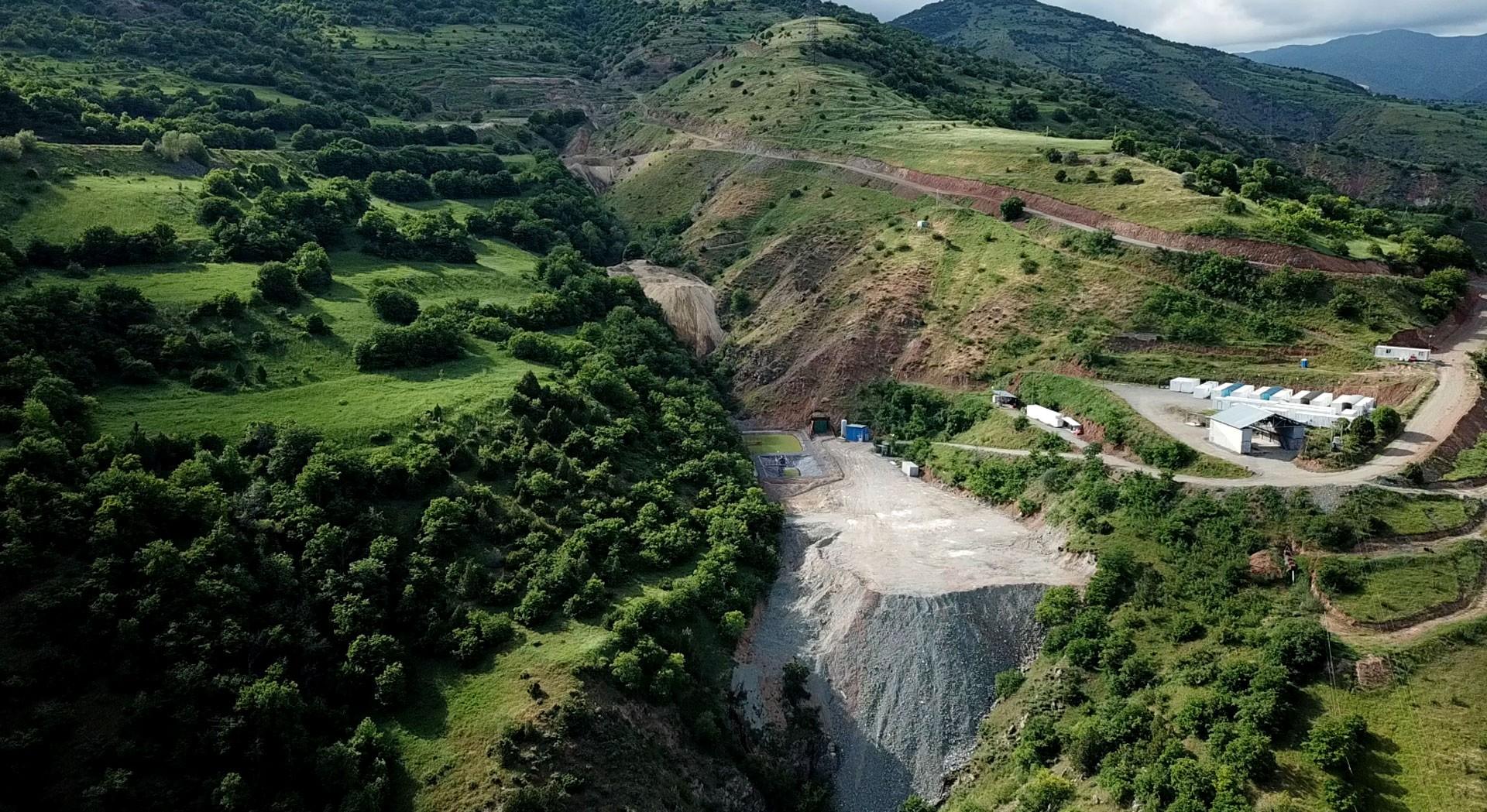
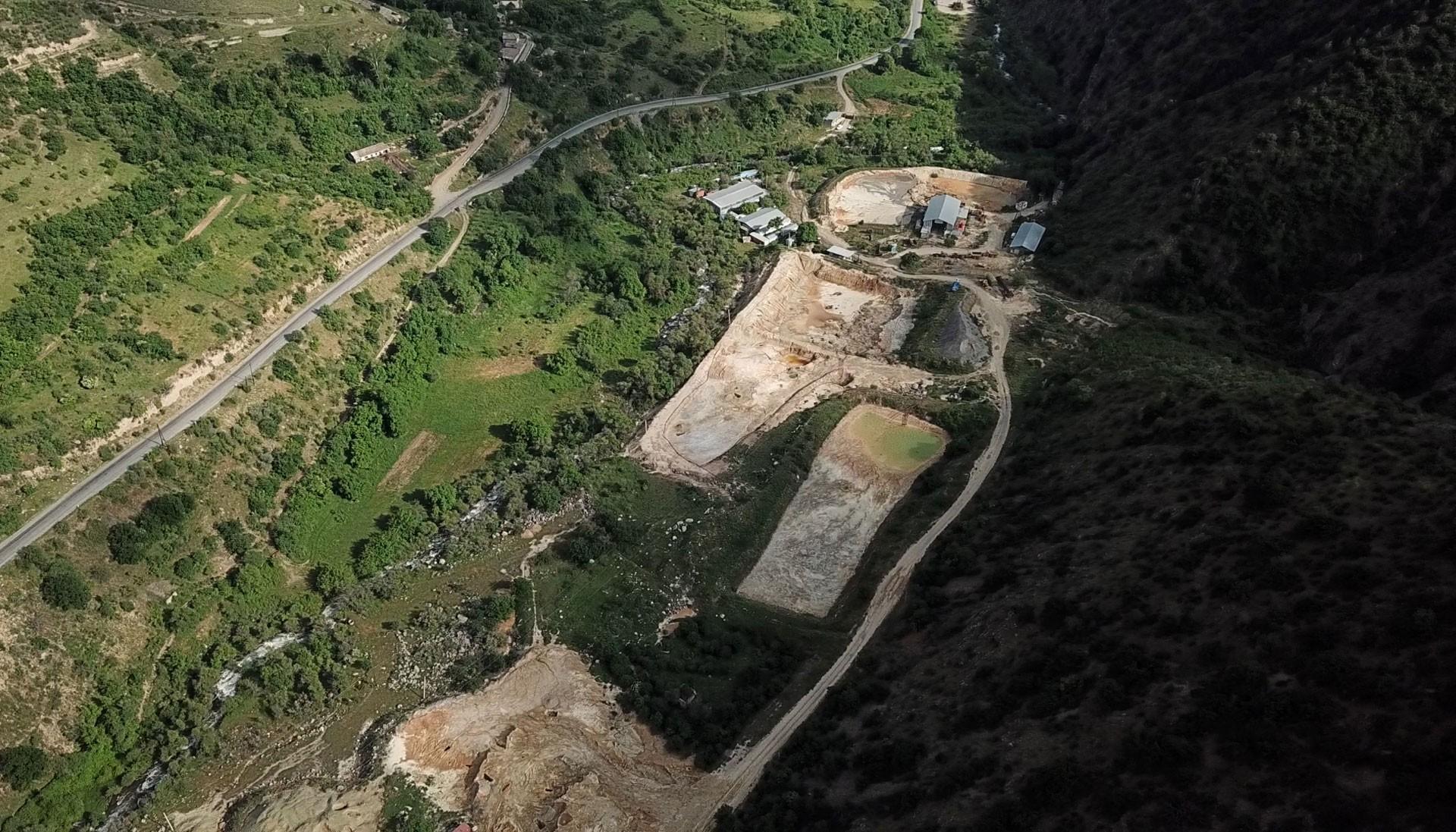
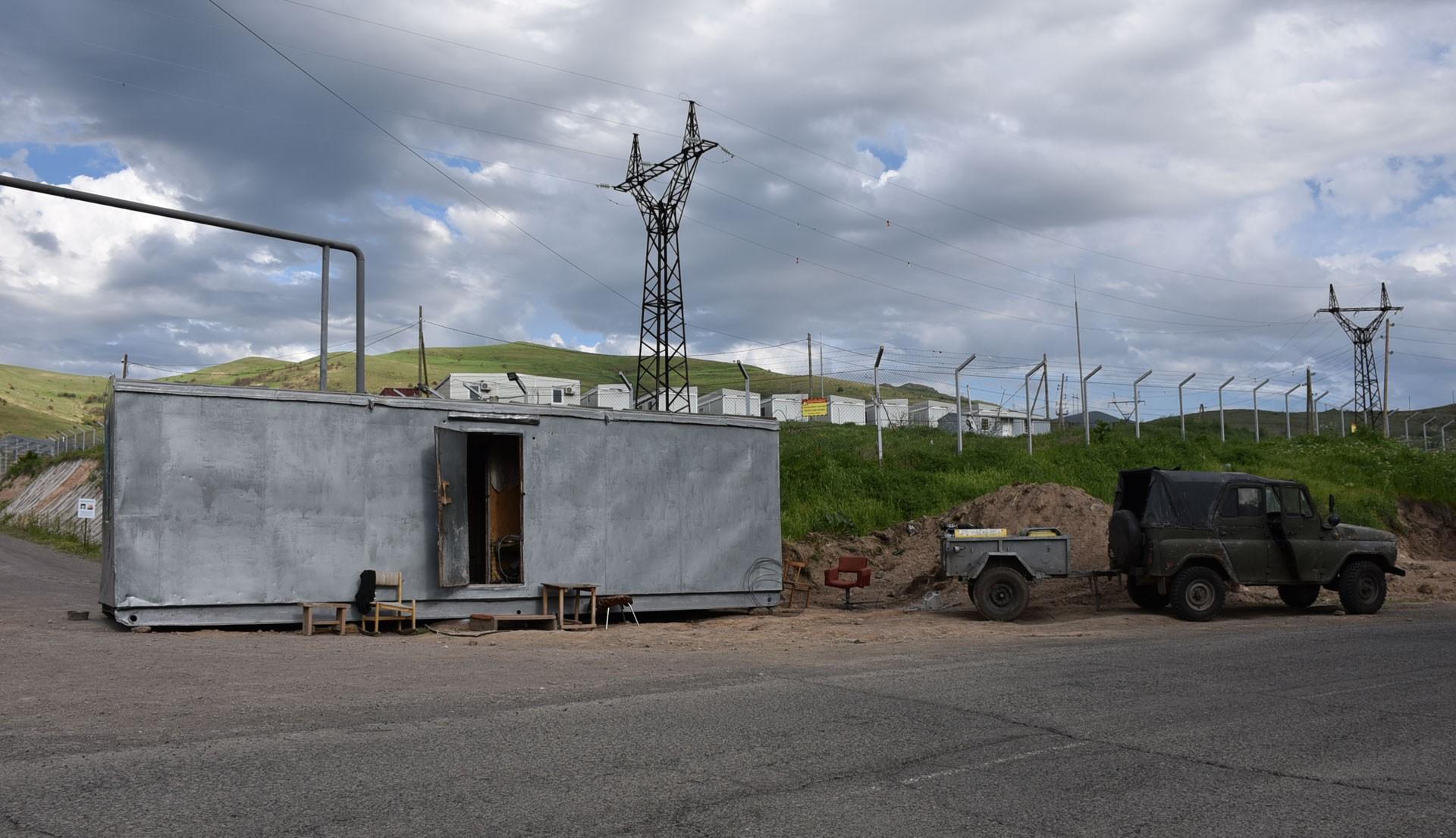
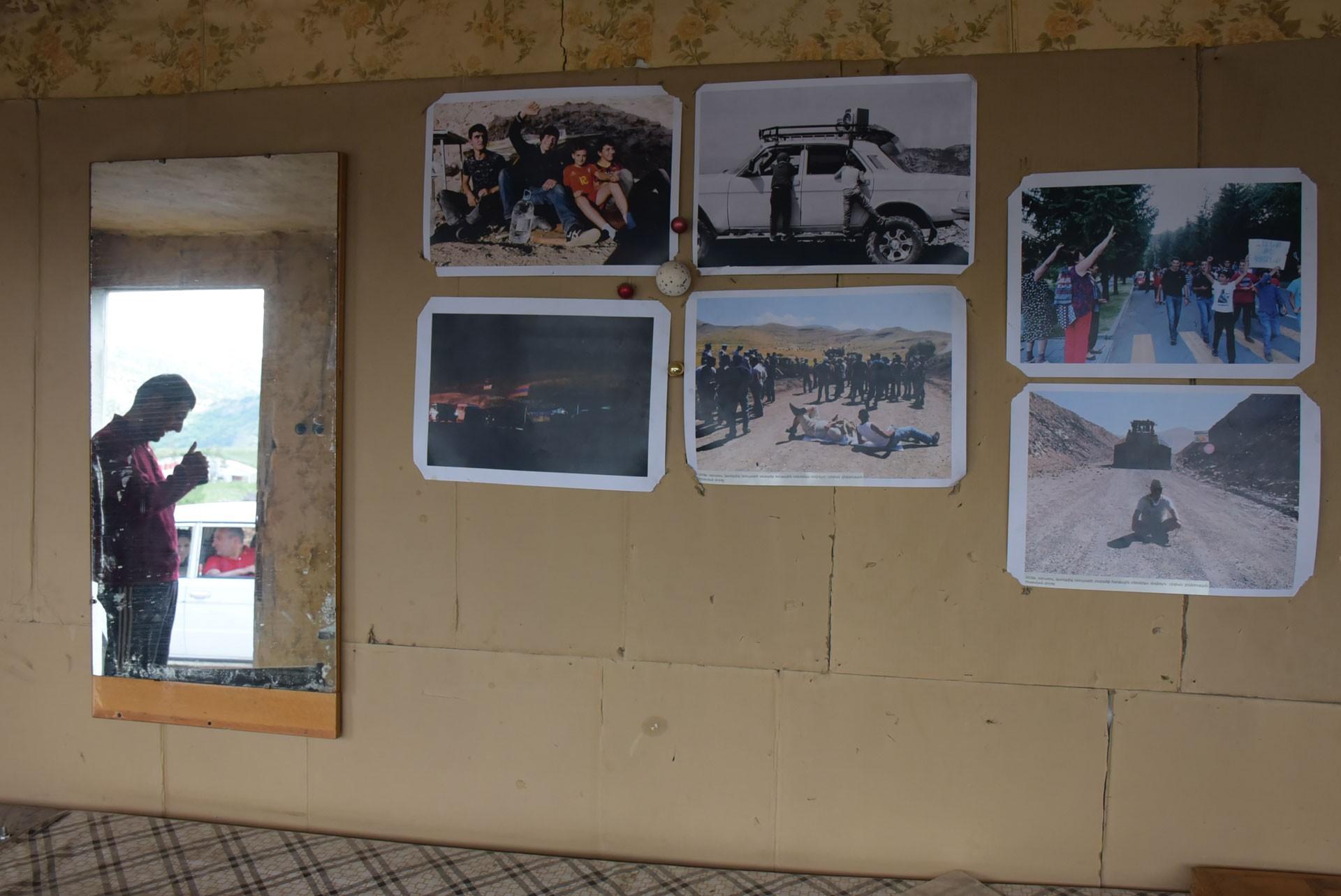
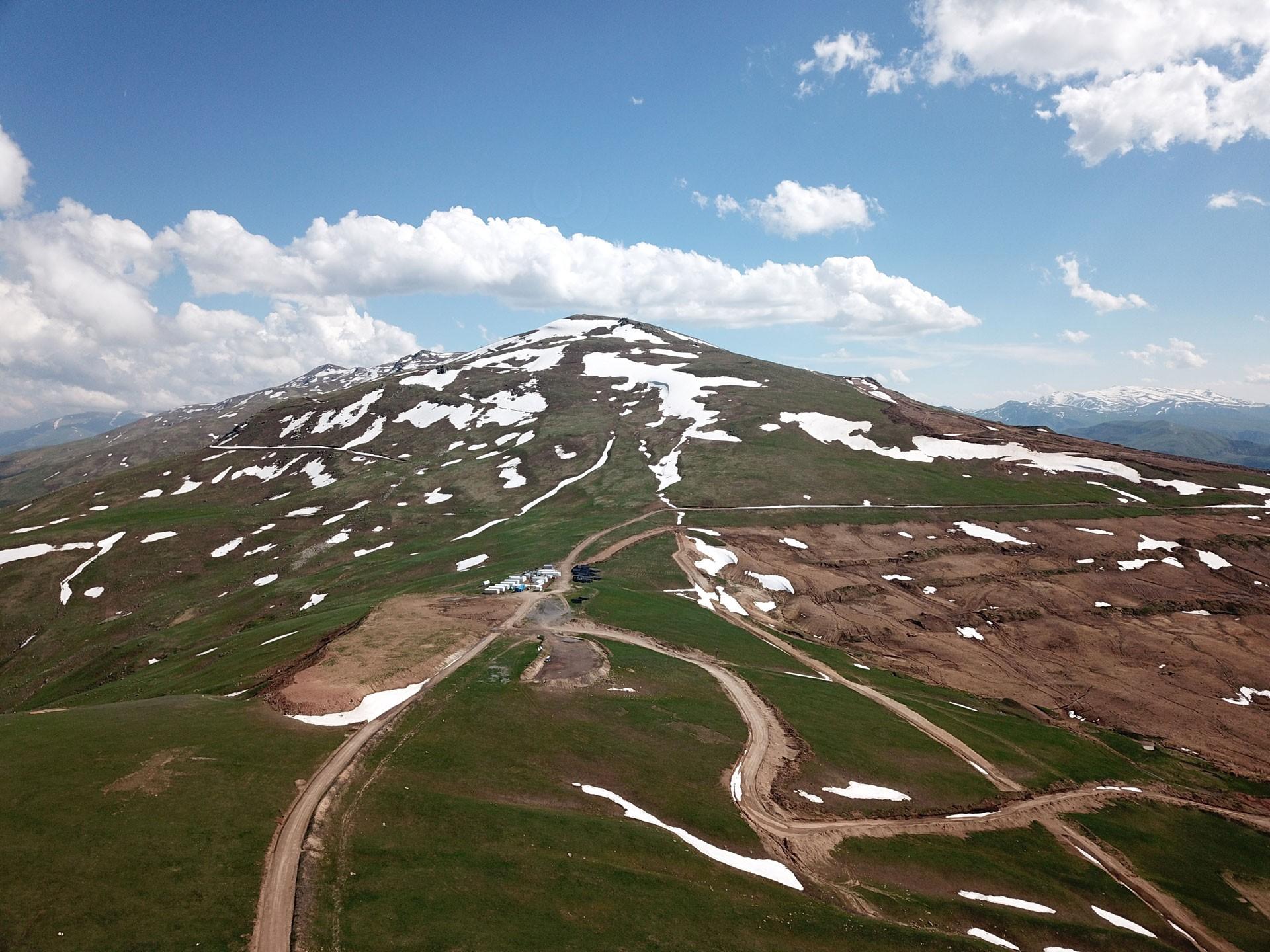

Comments (3)
Write a comment